- Best Time to Visit
- Weather & Climate
- Melbourne Airport Guide
- Neighborhoods to Know
- Public Transportation
- Best Hotels
- 48 Hours in Melbourne
- Day Trips From Melbourne
- Top Things to Do
- Free Things to Do
- Shopping in Melbourne
- Best Markets to Visit
- Melbourne's Coolest Street Art
- Top Beaches in Melbourne
- Must-Try Food in Melbourne
- Top Restaurants
- Nightlife in Melbourne
- Search Please fill out this field.
- Newsletters
- Destinations
- Australia & New Zealand

Getting Around Melbourne: A Guide to Public Transportation
Marina is a freelance writer who began contributing to TripSavvy in 2019. She set off with a one-way ticket to Asia in 2017 and has been living and traveling abroad ever since.
:max_bytes(150000):strip_icc():format(webp)/ScreenShot2020-06-26at9.26.43AM-fb9ce8217c00473f8f5e0d4d5837bd37.png)
Don’t underestimate the size of Melbourne, Australia. Travelers may only stick to Central Business District and its surrounding neighborhoods—but the city extends so much further than that, stretching around Port Phillip Bay for 3,857-square miles.
Melbourne is kind of like New York City , in a geographical sense, because a lot of Melburnians live in the outer suburbs and travel into the city for work. The daily commute isn’t ideal by car, so people in the city opt to use the Public Transport Victoria train, tram, and bus system instead. Sixteen regular service train lines run north, south, east, and west into and out of the city. It’s an impressive and efficient system for such a big city.
Here’s what you should know about getting around Melbourne.
How to Ride the Metro Melbourne Train Lines
Most people who use public transportation in Melbourne hop on the train. There are 16 Metro train lines that jut out of the city center and into the outer suburbs. The two main stations are Flinders Street and Southern Cross. Riding the train is a convenient alternative to driving, although a train ride could take just as long (if not longer) to get you where you want to go due to frequent stops.
- Passes: First, you’ll need to buy a myki card for AU$6. It gets you onto trains, trams, and buses throughout Melbourne and regional parts of Victoria. You can purchase one at 7-Eleven stores, a ticket booth at a premium train station, or on myki machines. Next, load the card with money to get from one stop to the next. You can do this at the ticket booth or at the myki machine.
- Fares: The lowest amount of money you can add to your myki card is AU$10. That will get you two rides as the default fare for the train is $4.50 one way. Children, seniors, and students are eligible for discounted tickets. However, keep in mind that the price for each train ride is different, depending on how far you travel and when you travel. A smart thing to do if you’re visiting for a week is to buy a seven-day myki pass for AU$44. This will save you from continually topping up your card. You can check fares using the myki fare calculator .
- How to Ride: Once you’ve purchased and loaded a myki pass, you must tap your card onto the center of the reader as you enter the railway platform. When you get off at your desired stop, simply tap off the same way you tapped on. Metro police conduct random checks on every train to see if passengers paid for their ride. If you don’t tap on before entering the platform and an officer catches you, it could result in a hefty fine.
- Hours of Operation: The train lines operate from 5 a.m. to midnight, Monday through Thursday. The night network runs Friday through Sunday, with trains operating every hour after 12 a.m.
- Service Changes: It’s typical for the Metro train to have periodic service changes. Delays may happen due to construction on the tracks, public events, or disorderly conduct by passengers. In the event of a service change, there will be announcements made throughout the station and written on the monitors. Sometimes, buses replace trains between specific stops, but there is always clear signage to help you navigate your way. You can check to see if your train line is running on time using the Public Transport Victoria journey planner .
- Transfers: Transfers are relatively easy to complete when using the Metro train. You can hop off one train and onto another without re-tapping your myki card. If you get confused about a transfer, ask a Metro train station employee (you’ll spot them in neon orange jumpers). They’re usually on the platforms during hours of operation to help passengers with their journey.
- Accessibility: PTV train stations are accessible to people with disabilities. Ramps, designated seating, and a combination of audio and visual announcements are available at larger stops. If you have hearing difficulties, you can use the National Relay Service . For more information about accessibility and mobility aid specifications, check out the Public Transport Victoria website .
You can use the journey planner on the PTV website or app to plan your route and find out real-time departure and arrival information.
Riding the Melbourne Metropolitan Bus Network
The public buses in Melbourne are another standard mode of transportation. There are 346 routes within Melbourne and regional Victoria, so it covers more than the train. You can get to shopping centers, hospitals, sporting venues, and other Melbourne attractions via bus. This map shows the different bus routes within Melbourne. You can use the Public Transport Victoria journey planner to help you find the specific stop you’re looking for.
The public bus takes the myki card as a bus pass, so make sure it’s loaded with money before you get on the bus. Fares are the same as the train. Note that riding the bus will take significantly longer than the train. Traffic, stop lights, and stops will add an extra 10–20 minutes to your journey.
Airport-Specific Shuttles
Melbourne has a fast, frequent, and cheap airport shuttle called the SkyBus . It’s a big red bus with WiFi onboard and plenty of seating. From Melbourne Tullamarine Airport, there are six SkyBus services: Melbourne City Express, Southbank Docklands Express, St Kilda Express, Peninsula Express, Western Express, and Airport Bus Eastside. The Melbourne City Express bus, for instance, departs every 10 minutes and transfers passengers directly from the airport to Southern Cross Station (and vice versa). It takes about 30–40 minutes and costs AU$19.75 one way.
Melbourne city trams are convenient for traveling to a specific destination within the city and the surrounding neighborhoods. The best part? It’s free within Melbourne CBD . Outside of this free tram zone, the tram takes the myki card, with fares the same as the train. Keep in mind that you cannot purchase a myki card on a tram or at a tram stop.
Use the Metropolitan tram network map to help you get to where you want to go. Locate the area where you want to go, then check the route number and destination on the front of the tram.
Taking the ferry in Melbourne is a great way to get on the water and travel across the peninsula. From Melbourne CBD, you can take a one-hour cruise to Williamstown, an outer suburb known for being the city's first seaport. It costs AU$24 one way and departs at various times, depending on the season. There’s also a 90-minute cruise from the city to Portarlington , a historic little town on the Bellarine Peninsula. This costs AU$16 for an adult one-way ticket.
Melbourne sits along the Yarra River, where you can hop on a water taxi to shuttle to different stops along the waterway. It operates seven days a week and departs every 15 minutes from 9 a.m. to midnight. It’s a popular way to get around during the summer, so it’s recommended to book a water taxi ticket in advance.
Taxis and Ride-Sharing Apps
If you’re in a hurry, taxis and ride-hailing services are available throughout Melbourne. Local cabs, such as 13cabs , are white cars with bright orange writing on the sides. Ride-railing services such as Uber, DiDi, and Ola operate all over the city, including the surrounding suburbs. It’s a common and quick way to get around.
Car Rentals
Renting a car to use within Melbourne CBD may not be the best idea. The city is dense with traffic, parking can get pricey, and the town has something called “ hook turns ,” which, if you’re not familiar with, are very tricky to navigate.
On the other hand, if you want to explore the Great Ocean Road or other outer suburb attractions, it might be a good idea to rent a car for the freedom to explore. Melbourne has car rental companies such as Budget, Hertz, Enterprise, and Avis. You can rent a car from the airport or within the city. Don’t forget, Aussies drive on the left side of the road!
Tips for Getting Around Melbourne
Getting around Melbourne isn’t very difficult. The city has an impressive amount of public transportation options with informative signs and friendly employees to help you navigate your way around.
- Be wary of rush hour: Traveling during rush hour can be a bit of a headache. Peak traffic on public transportation and the roads is Monday to Friday from 7 a.m. to 9 a.m. and 4 p.m. to 7 p.m. During this time, the roads leading into and out of the city will be jam-packed with people traveling to and from work. If you’re traveling by train, be attentive towards the express services.
- Melbourne CBD is very walkable: Melbourne CBD is easy to walk around because the streets are set up like a grid. If you’re following a map, it’s very straightforward, and sometimes quicker to walk than take the tram.
- If given the option, choose the train over the bus: The train is a bit more reliable without the traffic and quicker without so many stops.
- Download the Public Transport Victoria app: This will help with planning your journey throughout the city and the surrounding suburbs. It is available on both Google Play and the Apple Store .
Related Articles
More related articles.
🙌 Awesome, you're subscribed!
Thanks for subscribing! Look out for your first newsletter in your inbox soon!
Get us in your inbox
Sign up to our newsletter for the latest and greatest from your city and beyond
By entering your email address you agree to our Terms of Use and Privacy Policy and consent to receive emails from Time Out about news, events, offers and partner promotions.
Awesome, you're subscribed!
The best of Melbourne for free.
Sign up for our email to enjoy Melbourne without spending a thing (as well as some options when you’re feeling flush).
Déjà vu! We already have this email. Try another?
Love the mag?
Our newsletter hand-delivers the best bits to your inbox. Sign up to unlock our digital magazines and also receive the latest news, events, offers and partner promotions.
- Things to Do
- Food & Drink
- Arts & Culture Awards
- Coca-Cola Foodmarks
- Restaurants & Cafes
- Bars & Pubs
- Theatre & Dance
- Music & Nightlife
- Area Guides
- Competitions
- Los Angeles

A guide to Melbourne public transport
Explore Australia's cultural capital completely car free

Despite the local penchant for griping about the city’s public transport, Melbourne remains one of the best-connected cities in Australia. Like most major cities, we’ve got buses and trains , but what Melbourne is really known for is its extensive tram network.
Whether you opt for a tram, catch a bus or take a train, you can get pretty much anywhere in Melbourne without a car. All you need is an adventurous spirit and a Myki card – Melbourne's reusable public transport ticket you can buy or top up at metropolitan train stations as well as at some tram stops and bus interchanges.
RECOMMENDED: The unofficial rules for catching Melbourne public transport.
Been there, done that? Think again, my friend.
Public transport in Melbourne
1. trams.

Best for: Visitors hopping between CBD attractions or visiting the inner suburbs
Price: Free to $4.60 per trip (with a daily cap of $9.20)
Melbourne’s most iconic form of public transport is a novel treat for visitors. But because they’re not as common as trains or buses, there are a few tricks to using them right. You need to tap on (that is, hold your Myki card against the card reader) on trams, but you don't have to tap off. In the free tram zone (the Melbourne CBD; listen for announcements) you don’t need to tap on at all. This makes trams ideal for sightseeing in the city, and they travel out to some of the coolest inner-suburban hangouts as well. Trams sometimes stop suddenly, so make sure you hold on!
2. Trains

Best for: Those traveling long distances or going out to the ‘burbs.
Price: $4.60 per trip (with a daily cap of $9.20).
Melbourne’s trains are trams' beefcake older brother. They ferry people from the outer edges of Melbourne right through to the inner suburbs and CBD. Depending on where you are and where you’re going trains are sometimes a quicker option than trams or buses. But they can be packed to bursting during peak hour, so avoid traveling during the morning or evening commute if possible. Tap on at the station before boarding and tap off as you leave the station – and remember to press the button on the train door to get on and off.
3. Buses

Best for: Going further and getting closer.
Price : $4.60 per trip (with a daily cap of $9.20).
Buses are the unsung heroes of Melbourne’s rail-dominated public transport system. They might not have the same cachet as trams, but they cover more ground. You won’t find a tram that will take you directly to Australia’s biggest shopping centre, Chadstone, but a bus will. There are more routes for buses than trams, they travel further out into the suburbs, and they travel across the city more directly than other public transport options. Be sure to tap your Myki both on and off when using buses, and take your backpack off before boarding.
4. V/Line trains and coaches

Best for: Those day tripping from Melbourne or traveling to other parts of Victoria
Price: $4.60-$35 per trip
Where Melbourne’s trams, trains and buses fear to tread V/Line rushes in, no worries. Victoria's V/Line trains and coaches are your ticket to the state’s beautiful regional cities and towns. In the Melbourne CBD V/Line all services connect at Southern Cross Station, which in itself is easily accessed by tram or bus. From here you can catch a train or coach to the goldfields of Bendigo or Ballarat; to the springs of Daylesford; to the shorelines of Geelong or Warrnambool; or even interstate to Adelaide. Importantly, not all V/Line services use Myki so check the ticketing info before travelling.
Looking for travel inspo?
10 places in victoria that look nothing like victoria.
- Things to do

Think you’ve seen all of Victoria? Take a gander at some of the state's most unfamiliar locations, from ancient caves to European flower farms.
[image] [title]
Discover Time Out original video
- Acknowledgement of Country
- Press office
- Investor relations
- Work for Time Out
- Editorial guidelines
- Privacy notice
- Do not sell my information
- Cookie policy
- Accessibility statement
- Terms of use
- Reviews policy
- Competition terms
- About the site
- Modern slavery statement
- Manage cookies
- Advertising
- Report an error
- Time Out Market
Time Out products
- Time Out Worldwide
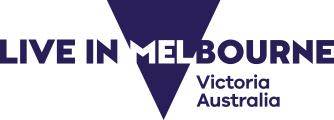
- Visa Nomination Register/Login
- OQU Register/Login
- News & Events
Public transport
Getting to where you want to go in Melbourne is easy with our reliable public transport system and taxis.
Many locals in Melbourne use our reliable public transport system to get to work and get around. Public transport in Melbourne is easy to use – you can get around on trains, trams and buses using the one payment method. Taxis are also readily available.
Using trains, trams and buses in Melbourne
Melbourne has one of the best public transport systems in Australia, offering a number of services including trains, buses and trams (also known as trolleys or streetcars).
Metro operates Melbourne’s metropolitan train network, while V/Line operates Victoria’s regional public transport. Different companies operate our trams and buses.
myki card – your transport ticket in Melbourne
No matter what form of public transport you use throughout Melbourne, you can pay for all of them with one payment method: a myki card.
myki is plastic card used to ‘touch on’ when you start travelling and ‘touch off’ when you finish travelling. It’s similar to other public transport ticketing systems around the world and makes travelling through Melbourne much easier. You simply add money to the card and top up when you need to.
Visit the myki website for more information on how to buy and use a myki as well as cost information.
Go to the Public Transport Victoria (PTV) website to find out how to use Melbourne’s public transport system.
Melbourne taxis
Taxis (cabs) are readily available in metropolitan and regional areas. To hire a taxi you can:
- make a phone booking
- make an online booking
- wait at a taxi-cab rank
- hail a taxi from the side of the road or using an App.
Although there are various taxi companies, taxis in Melbourne are easily recognisable by the signs that sit atop their roofs and the branding painted on their doors.
Every fare is metered and extra charges can apply, for example for road tolls.
All taxis must be registered and the driver must display his/her identification in the car for you to see. Fare information is also displayed inside taxis for you to easily see.
More information about Victoria’s taxi services is available on the Taxi Services Commission website .
此页面没有中文版本。选择您的下一步。
停留在此网站查看其他内容
This page is not available in Chinese. Choose what you’d like to do next.
Stay on this site to view other content
Continue to read this page in English
- Skip to content
What are you looking for?
- search-2024-what-panel#handlePrimaryCategoryChange keydown.enter->search-2024-what-panel#handlePrimaryCategoryChange" for="primary-category-anything" class="search-2024-what-panel__primary-category-label"> search-2024-what-panel#handlePrimaryCategoryChange" data-search-2024-what-panel-target="primaryCategoryInput" data-search-2024-target="primaryCategoryInput" data-search-2024-gtm-target="categoryCheckbox" checked=checked> Anything
- search-2024-what-panel#handlePrimaryCategoryChange keydown.enter->search-2024-what-panel#handlePrimaryCategoryChange" for="primary-category-things_to_do" class="search-2024-what-panel__primary-category-label"> search-2024-what-panel#handlePrimaryCategoryChange" data-search-2024-what-panel-target="primaryCategoryInput" data-search-2024-target="primaryCategoryInput" data-search-2024-gtm-target="categoryCheckbox" > Things to do
- search-2024-what-panel#handlePrimaryCategoryChange keydown.enter->search-2024-what-panel#handlePrimaryCategoryChange" for="primary-category-eat_and_drink" class="search-2024-what-panel__primary-category-label"> search-2024-what-panel#handlePrimaryCategoryChange" data-search-2024-what-panel-target="primaryCategoryInput" data-search-2024-target="primaryCategoryInput" data-search-2024-gtm-target="categoryCheckbox" > Eat and drink
- search-2024-what-panel#handlePrimaryCategoryChange keydown.enter->search-2024-what-panel#handlePrimaryCategoryChange" for="primary-category-shopping" class="search-2024-what-panel__primary-category-label"> search-2024-what-panel#handlePrimaryCategoryChange" data-search-2024-what-panel-target="primaryCategoryInput" data-search-2024-target="primaryCategoryInput" data-search-2024-gtm-target="categoryCheckbox" > Shopping
- search-2024-what-panel#handlePrimaryCategoryChange keydown.enter->search-2024-what-panel#handlePrimaryCategoryChange" for="primary-category-hotels" class="search-2024-what-panel__primary-category-label"> search-2024-what-panel#handlePrimaryCategoryChange" data-search-2024-what-panel-target="primaryCategoryInput" data-search-2024-target="primaryCategoryInput" data-search-2024-gtm-target="categoryCheckbox" > Hotels
- search-2024-what-panel#handlePrimaryCategoryChange keydown.enter->search-2024-what-panel#handlePrimaryCategoryChange" for="primary-category-guides" class="search-2024-what-panel__primary-category-label"> search-2024-what-panel#handlePrimaryCategoryChange" data-search-2024-what-panel-target="primaryCategoryInput" data-search-2024-target="primaryCategoryInput" data-search-2024-gtm-target="categoryCheckbox" > Guides
- search-2024-what-panel#onSecondaryCategoryChange keydown.enter->search-2024-what-panel#onSecondaryCategoryChange" class="search-2024-what-panel__secondary-category-label"> search-2024-what-panel#onSecondaryCategoryChange"> Free
- search-2024-what-panel#onSecondaryCategoryChange keydown.enter->search-2024-what-panel#onSecondaryCategoryChange" class="search-2024-what-panel__secondary-category-label"> search-2024-what-panel#onSecondaryCategoryChange"> Family and kids
- search-2024-what-panel#onSecondaryCategoryChange keydown.enter->search-2024-what-panel#onSecondaryCategoryChange" class="search-2024-what-panel__secondary-category-label"> search-2024-what-panel#onSecondaryCategoryChange"> Events
- search-2024-what-panel#onSecondaryCategoryChange keydown.enter->search-2024-what-panel#onSecondaryCategoryChange" class="search-2024-what-panel__secondary-category-label"> search-2024-what-panel#onSecondaryCategoryChange"> Restaurant
- search-2024-what-panel#onSecondaryCategoryChange keydown.enter->search-2024-what-panel#onSecondaryCategoryChange" class="search-2024-what-panel__secondary-category-label"> search-2024-what-panel#onSecondaryCategoryChange"> Theatre
- search-2024-what-panel#onSecondaryCategoryChange keydown.enter->search-2024-what-panel#onSecondaryCategoryChange" class="search-2024-what-panel__secondary-category-label"> search-2024-what-panel#onSecondaryCategoryChange"> Entertainment
- search-2024-what-panel#onSecondaryCategoryChange keydown.enter->search-2024-what-panel#onSecondaryCategoryChange" class="search-2024-what-panel__secondary-category-label"> search-2024-what-panel#onSecondaryCategoryChange"> Attractions
- search-2024-what-panel#onSecondaryCategoryChange keydown.enter->search-2024-what-panel#onSecondaryCategoryChange" class="search-2024-what-panel__secondary-category-label"> search-2024-what-panel#onSecondaryCategoryChange"> Festival
- search-2024-what-panel#onSecondaryCategoryChange keydown.enter->search-2024-what-panel#onSecondaryCategoryChange" class="search-2024-what-panel__secondary-category-label"> search-2024-what-panel#onSecondaryCategoryChange"> Music
- search-2024-what-panel#onSecondaryCategoryChange keydown.enter->search-2024-what-panel#onSecondaryCategoryChange" class="search-2024-what-panel__secondary-category-label"> search-2024-what-panel#onSecondaryCategoryChange"> Art
- search-2024-what-panel#onSecondaryCategoryChange keydown.enter->search-2024-what-panel#onSecondaryCategoryChange" class="search-2024-what-panel__secondary-category-label"> search-2024-what-panel#onSecondaryCategoryChange"> Exhibition
- search-2024-what-panel#onSecondaryCategoryChange keydown.enter->search-2024-what-panel#onSecondaryCategoryChange" class="search-2024-what-panel__secondary-category-label"> search-2024-what-panel#onSecondaryCategoryChange"> Market
- search-2024-what-panel#onSecondaryCategoryChange keydown.enter->search-2024-what-panel#onSecondaryCategoryChange" class="search-2024-what-panel__secondary-category-label"> search-2024-what-panel#onSecondaryCategoryChange"> Comedy
- search-2024-what-panel#onSecondaryCategoryChange keydown.enter->search-2024-what-panel#onSecondaryCategoryChange" class="search-2024-what-panel__secondary-category-label"> search-2024-what-panel#onSecondaryCategoryChange"> Tour
- search-2024-what-panel#onSecondaryCategoryChange keydown.enter->search-2024-what-panel#onSecondaryCategoryChange" class="search-2024-what-panel__secondary-category-label"> search-2024-what-panel#onSecondaryCategoryChange"> Community and recreation
- search-2024-what-panel#onSecondaryCategoryChange keydown.enter->search-2024-what-panel#onSecondaryCategoryChange" class="search-2024-what-panel__secondary-category-label"> search-2024-what-panel#onSecondaryCategoryChange"> Talks and workshops
- search-2024-what-panel#onSecondaryCategoryChange keydown.enter->search-2024-what-panel#onSecondaryCategoryChange" class="search-2024-what-panel__secondary-category-label"> search-2024-what-panel#onSecondaryCategoryChange"> Cafe
- search-2024-what-panel#onSecondaryCategoryChange keydown.enter->search-2024-what-panel#onSecondaryCategoryChange" class="search-2024-what-panel__secondary-category-label"> search-2024-what-panel#onSecondaryCategoryChange"> Bar and pub
- search-2024-what-panel#onSecondaryCategoryChange keydown.enter->search-2024-what-panel#onSecondaryCategoryChange" class="search-2024-what-panel__secondary-category-label"> search-2024-what-panel#onSecondaryCategoryChange"> Takeaway
- search-2024-what-panel#onSecondaryCategoryChange keydown.enter->search-2024-what-panel#onSecondaryCategoryChange" class="search-2024-what-panel__secondary-category-label"> search-2024-what-panel#onSecondaryCategoryChange"> Accessories
- search-2024-what-panel#onSecondaryCategoryChange keydown.enter->search-2024-what-panel#onSecondaryCategoryChange" class="search-2024-what-panel__secondary-category-label"> search-2024-what-panel#onSecondaryCategoryChange"> Clothing
- search-2024-what-panel#onSecondaryCategoryChange keydown.enter->search-2024-what-panel#onSecondaryCategoryChange" class="search-2024-what-panel__secondary-category-label"> search-2024-what-panel#onSecondaryCategoryChange"> Gifts
- search-2024-what-panel#onSecondaryCategoryChange keydown.enter->search-2024-what-panel#onSecondaryCategoryChange" class="search-2024-what-panel__secondary-category-label"> search-2024-what-panel#onSecondaryCategoryChange"> Home and tech
- search-2024-what-panel#onSecondaryCategoryChange keydown.enter->search-2024-what-panel#onSecondaryCategoryChange" class="search-2024-what-panel__secondary-category-label"> search-2024-what-panel#onSecondaryCategoryChange"> Food and drink
- search-2024-what-panel#onSecondaryCategoryChange keydown.enter->search-2024-what-panel#onSecondaryCategoryChange" class="search-2024-what-panel__secondary-category-label"> search-2024-what-panel#onSecondaryCategoryChange"> Personal care
- search-2024-what-panel#onSecondaryCategoryChange keydown.enter->search-2024-what-panel#onSecondaryCategoryChange" class="search-2024-what-panel__secondary-category-label"> search-2024-what-panel#onSecondaryCategoryChange"> Recreation
- search-2024-what-panel#onSecondaryCategoryChange keydown.enter->search-2024-what-panel#onSecondaryCategoryChange" class="search-2024-what-panel__secondary-category-label"> search-2024-what-panel#onSecondaryCategoryChange"> Things to do
- search-2024-what-panel#onSecondaryCategoryChange keydown.enter->search-2024-what-panel#onSecondaryCategoryChange" class="search-2024-what-panel__secondary-category-label"> search-2024-what-panel#onSecondaryCategoryChange"> Eat and drink
- search-2024-what-panel#onSecondaryCategoryChange keydown.enter->search-2024-what-panel#onSecondaryCategoryChange" class="search-2024-what-panel__secondary-category-label"> search-2024-what-panel#onSecondaryCategoryChange"> Shopping
- search-2024-what-panel#onSecondaryCategoryChange keydown.enter->search-2024-what-panel#onSecondaryCategoryChange" class="search-2024-what-panel__secondary-category-label"> search-2024-what-panel#onSecondaryCategoryChange"> Places to stay
When are you visiting?
- search-2024-when-panel#onDateOptionChanged" data-search-2024-when-panel-target="dateOptionControl" data-search-2024-gtm-target="dateKeyword" data-search-2024-target="dateKeywordInput" checked=checked> Anytime
- search-2024-when-panel#onDateOptionChanged" data-search-2024-when-panel-target="dateOptionControl" data-search-2024-gtm-target="dateKeyword" data-search-2024-target="dateKeywordInput" > Today
- search-2024-when-panel#onDateOptionChanged" data-search-2024-when-panel-target="dateOptionControl" data-search-2024-gtm-target="dateKeyword" data-search-2024-target="dateKeywordInput" > Tomorrow
- search-2024-when-panel#onDateOptionChanged" data-search-2024-when-panel-target="dateOptionControl" data-search-2024-gtm-target="dateKeyword" data-search-2024-target="dateKeywordInput" > This weekend
- search-2024-when-panel#onDateOptionChanged" data-search-2024-when-panel-target="dateOptionControl" data-search-2024-gtm-target="dateKeyword" data-search-2024-target="dateKeywordInput" > Specific dates
Where do you want to look?
- East Melbourne
- Melbourne CBD
- North Melbourne
- South Yarra
- St Kilda Rd and Domain
- West Melbourne
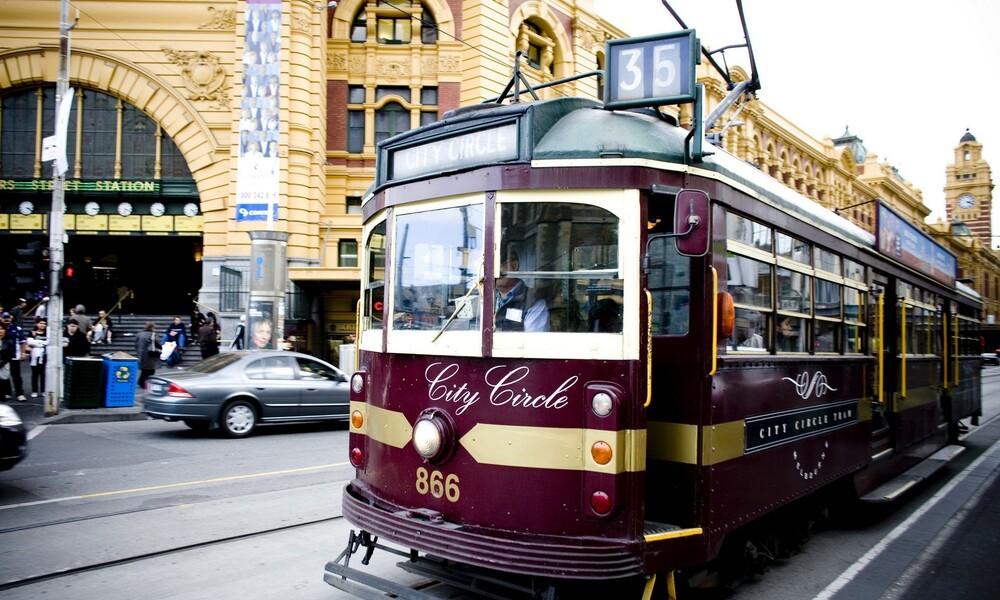
Public transport
Melbourne's famed trams and extensive train and bus network make it easy to explore every corner of the city.
Melbourne's public transport network extends from the city centre in all directions, with trains, trams and buses offering comprehensive public transport services.
There's also the free City Circle Tram to help you get around to all the city's major attractions.
Maps and timetables
For detailed information and timetables for trains, trams and buses, visit Public Transport Victoria or call 1800 800 007.
Plan your journey
The public transport journey planner can help you plan your trip from A to B. Many attractions are listed in the journey planner – simply enter your origin and the name of the attraction in the destination box for a tailored trip plan.
You can also download the PTV app .
Accessibility
Do you use a mobility aid, need priority seating or have a vision or hearing impairment? There are services, support and resources to help you access public transport in Melbourne.
For more information, visit accessing public transport .
All night public transport Friday and Saturday
Trains as well as some trams and buses operate through the night on Fridays and Saturdays. A selection of coach services also run to key regional centres. Find out more about the Night Network .
Free Tram Zone
Melbourne’s free tram zone includes the central city and Docklands, bounded by Spring Street, Flinders Street and La Trobe Street. The zone also includes Victoria Street, William Street and Elizabeth Street, surrounding the Queen Victoria Market.
If you’re only travelling in this zone, you don’t need a myki, but travelling by train or bus still requires a valid ticket.
Free Tram Zone map (PDF 757KB)
You’ll need a myki to travel on most of Melbourne's trains, trams and buses. It is a re-usable smart card that stores value to pay your public transport fare.
You can buy and top up a myki from:
7-Eleven stores and other retailers where you see the myki sign
major train stations, such as Flinders Street Station and Southern Cross Station
myki machines at metropolitan train stations
your Android phone , via Google Pay
online at Public Transport Victoria
calling 1800 800 007 (delivered to Australian addresses only).
How to use myki
Once you have a valid myki, you're ready to travel. All you need to do is touch on at the myki reader (at entry / exit points at train stations and on board trams and buses) at the start of each trip. Then touch off when you exit the train station or vehicle.
Failure to show a valid myki (that is topped up and touched on) to a ticket inspector can lead to a fine.
Sign up to What's On weekly
Welcome! Thanks for signing up!
Discover more
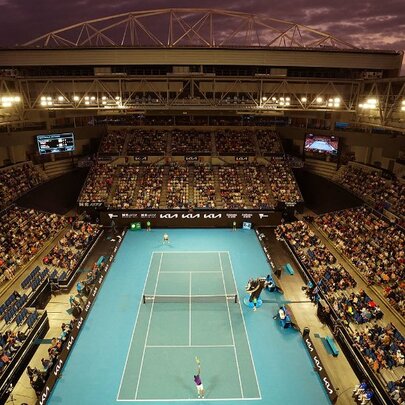
Major events
From the Australian Open to the Melbourne Cup, major events take centre stage throughout the year.
- Entertainment
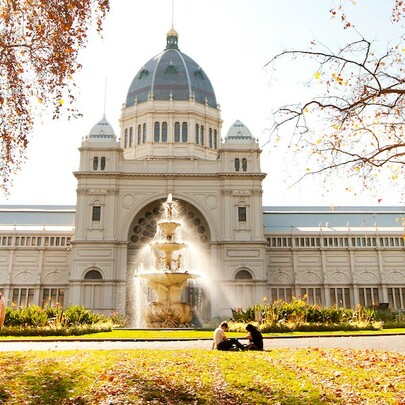
Walks and itineraries
These self-guided walks and itineraries will help you discover Melbourne's best sights.
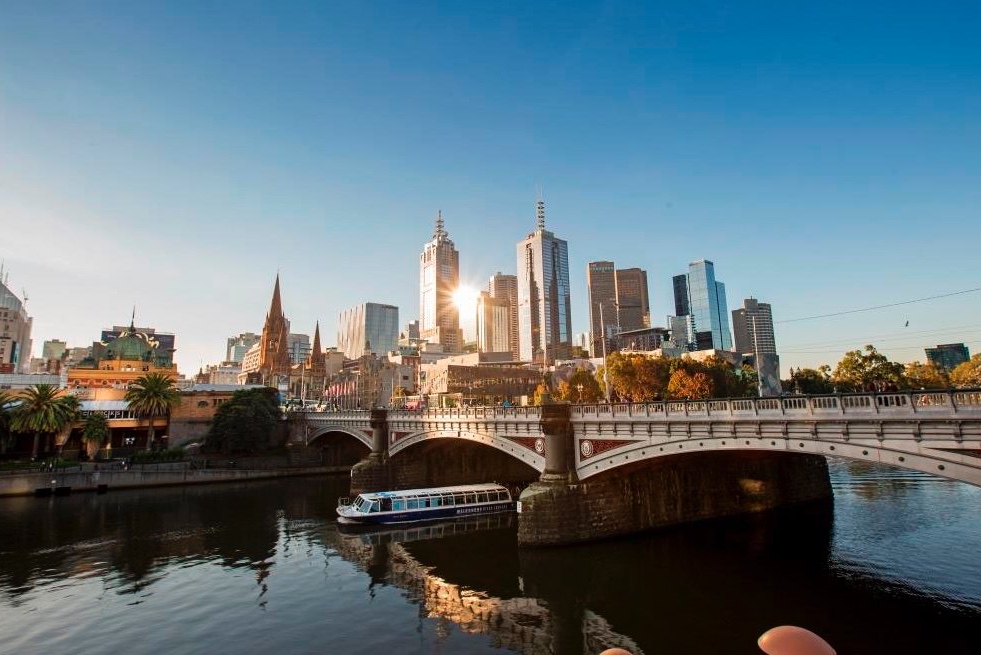
Wominjeka – Welcome to Melbourne (Narrm)
Plan your visit to Melbourne with all info and tips on what to see and how to get around.
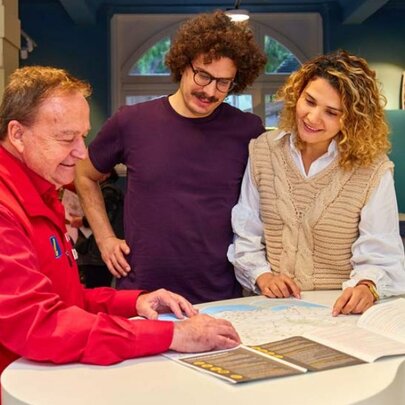
Browse maps of inner Melbourne or drop into a visitor hub to pick one up.

Australia Recommends 2024

Travel Inspiration

G'day, the short film

Discover your Australia

Travel videos

Deals and offers

Australian Capital Territory

New South Wales

Northern Territory

South Australia

Western Australia

External Territories

The Whitsundays

Mornington Peninsula

Port Douglas

Ningaloo Reef

Airlie Beach

Kangaroo Island

Rottnest Island

Hamilton Island

Lord Howe Island

Tiwi Islands

Phillip Island

Bruny Island

Margaret River

Barossa Valley

The Grampians

Hunter Valley

McLaren Vale

Glass House Mountains

Alice Springs

Uluru and Kata Tjuta

The Kimberley

Flinders Ranges

Kakadu National Park

Eyre Peninsula

Karijini National Park

Great Barrier Reef

Blue Mountains

Daintree Rainforest

Great Ocean Road

Purnululu National Park

Cradle Mountain-Lake St Clair National Park

Litchfield National Park

Aboriginal experiences

Arts and culture

Festivals and events

Food and drink

Adventure and sports

Walks and hikes

Road trips and drives

Beaches and islands

Nature and national parks

Eco-friendly travel

Health and wellness

Family travel

Family destinations

Family road trips

Backpacking

Work and holiday

Beginner's guide

Accessible travel

Planning tips
Trip planner

Australian budget guide

Itinerary planner

Find a travel agent

Find accommodation

Find transport

Visitor information centres
Deals and travel packages

Visa and entry requirements FAQ

COVID-19 travel and entry advice

Customs and biosecurity

Working Holiday Maker visas

Facts about Australia

Experiences that will make you feel like an Aussie

People and culture

Health and safety FAQ

Cities, states & territories

Iconic places and attractions

When is the best time to visit Australia?

Seasonal travel

Events and festivals

School holidays

Public holidays
How to get to Australia's most iconic cities

How long do I need for my trip to Australia?

How to travel around Australia

Guide to driving in Australia

How to hire a car or campervan

How to plan a family road trip

How to plan an outback road trip

Flinders Street Station, Melbourne, Victoria © Josie Withers Photography
Getting around Melbourne
Whether you self-drive or take advantage of Melbourne’s efficient public transport system, you’ll find it easy and efficient to get around the city.
By Mark Sariban
Australia’s cities all offer clean, efficient and affordable public transport options, allowing visitors to explore with ease and comfort. Known for its historic suburban tram system, Melbourne is no exception to this rule. Jump on board any of these great transport options and discover how easy it is to get around Melbourne.
Transport in Melbourne

St Paul's Cathedral, Swanston Street, Melbourne, Victoria © Josie Withers Photography
- Airport Transfers
- Accessibility
Melbourne offers free tram rides within the city centre. To use public transport outside of the free tram zone, you need to purchase a myki card . You can purchase a myki card from retail outlets displaying the myki sign, visitor centres and at train stations.
- Use your myki card on trains, trams and buses. You’ll need to load your card with some money to cover your fares. You can top it up at convenience stores and train stations as your balance runs low.
- You can also purchase a myki Explorer kit, which includes a myki card loaded with a full day of unlimited travel on trains, trams and buses in metropolitan Melbourne, handy maps and discounts on tickets to major attractions.
- To start your ride, tap your myki card on the reader when you board your selected mode of transport and be sure to tap off when you disembark.
Melbourne is serviced by two airports, Melbourne Airport (MEL) and Avalon Airport (AVV). There are several public transport options available for reaching the city from either airport.
- SkyBus express services run between 4am and 1am daily from Melbourne Airport and from early morning to evening from Avalon Airport. Both SkyBus services stop at Southern Cross Station on Spencer Street in the city. Tickets can be purchased either online or at the airport.
- You’ll find taxi ranks and rideshare pick-up areas at the front of each terminal – simply follow the signage. The journey to the city from Melbourne Airport takes around 30 minutes, or 50 minutes from Avalon Airport.
Tip: If you’re in a group, it will be less expensive to travel from Melbourne Airport to the city by taxi or rideshare.
In Australia, airlines, trains, buses and ferries have accessible options for people using a wheelchair or mobility device.
- Melbourne Airport provides special assistance for people with disabilities and can help with baggage, getting around the airport, and getting on and off the plane.
- The majority of buses and trains have accessible options – check the Public Transport Victoria Accessibility page for information on using public transport before your trip.
Tip: Download the City of Melbourne’s mobility map to easily locate accessible toilets and car parks in the city.
Getting around Melbourne on public transport

Collins Street, Melbourne, Victoria © Josie Withers Photography
Trains are a great way to visit attractions across the city and reach the surrounding suburb. Major stations in the city include Central, Flinders and Southern Cross Station. Use the Journey planner tool to find your route.
- Trains to regional destinations including Geelong, Ballarat, Bendigo and Albury operate on the V/Line services. You can use your myki card on all train networks.
Catching a tram is a great way to get around Melbourne while getting a feel for the city. Use the Journey planner tool to find your route.
- A Free Tram Zone operates in Melbourne city centre. If your travel is within this zone you don’t need to tap on or off with your myki card.
- The free hop-on, hop-off City Circle Tram (number 35) is a great introduction to Melbourne, with city loop services running every 15 minutes.
- Melbourne’s suburban tram routes run in two zones, with the cost using your myki card calculated according to the zones you travel in.
The bus network is another efficient way of hopping around metro Melbourne and popular neighbourhoods. Use the Journey planner tool to find your route.
- Night Network trains, trams and buses operate throughout the night on Fridays and Saturdays.
Getting around Melbourne by car

Flinders Lane, Melbourne, Victoria © Josie Withers Photography
Driving in Melbourne is easy and safe, but you may want to check whether your hotel charges a daily parking fee.
Melbourne is the only city in Australia with a ‘ hook turn ’ (a right-hand turn you make from the left-hand lane), so be sure to familiarise yourself with this manoeuvre if you’re planning to drive in the city.
Having a car for part of your trip may be beneficial if you plan to visit some of the stunning destinations outside of Melbourne, but you can also book tours to many of these places and leave the driving to someone else.
Tip: If you’re hiring an electric vehicle, you’ll find a map of charging stations here.
Melbourne is served by numerous taxi companies.
- You can hail a taxi on the street (a taxi is available if its rooftop light is on) or at taxi ranks in built-up areas.
- You can also book a taxi by phoning individual companies, or by downloading an app from 13cabs or GoCatch .
Tip: You will be asked to pre-pay an estimated fare when riding in a taxi after 10pm.
Most major ridesharing platforms operate in Melbourne, including Uber , Ola and DiDi , as well as local operator GoCatch .
Tip: Female travellers can also book a ride with Shebah , a rideshare service with all-women drivers catering to women. (Adult men can use the service if they need to transport a child who requires an approved child safety seat.)
Make the most of your time in Melbourne with a guided tour . Many tour operators offer half-day and full-day driving tours of the city and surrounds, including Show Me Melbourne and Melbourne Private Tours .
- Enjoy an emissions-free sightseeing tour of Melbourne by pedicab with Green Cabs .

Where to stay in Melbourne
Other forms of transport in Melbourne

Southbank, Melbourne, Victoria © Josie Withers Photography
- Water taxis
- Cycling & scooting
- Williamstown Ferries offers two-hour cruises from Southbank to Williamstown, a seaport at the mouth of the Yarra River.
If you’re in town for a sporting event or a stadium concert, you can catch a water taxi from Southbank to Melbourne’s sports precinct .
Melbourne is mostly flat and has an extensive network of bike paths, making it easy to cycle around the city.
- Download an app from Neuron to access a pool of shared e-scooters across Melbourne.
More articles like this

We use cookies on this site to enhance your user experience. Find out more . By clicking any link on this page you are giving your consent for us to set cookies.
Acknowledgement of Country

We acknowledge the Traditional Aboriginal and Torres Strait Islander Owners of the land, sea and waters of the Australian continent, and recognise their custodianship of culture and Country for over 60,000 years.
- New Zealand (English)
- United States (English)
- Canada (English)
- United Kingdom (English)
- India (English)
- Malaysia (English)
- Singapore (English)
- Indonesia (Bahasa Indonesia)
- Deutschland (Deutsch)
- France (Français)
- Italia (Italiano)
- 中国大陆 (简体中文)
*Product Disclaimer: Tourism Australia is not the owner, operator, advertiser or promoter of the listed products and services. Information on listed products and services, including Covid-safe accreditations, are provided by the third-party operator on their website or as published on Australian Tourism Data Warehouse where applicable. Rates are indicative based on the minimum and maximum available prices of products and services. Please visit the operator’s website for further information. All prices quoted are in Australian dollars (AUD). Tourism Australia makes no representations whatsoever about any other websites which you may access through its websites such as australia.com. Some websites which are linked to the Tourism Australia website are independent from Tourism Australia and are not under the control of Tourism Australia. Tourism Australia does not endorse or accept any responsibility for the use of websites which are owned or operated by third parties and makes no representation or warranty in relation to the standard, class or fitness for purpose of any services, nor does it endorse or in any respect warrant any products or services by virtue of any information, material or content linked from or to this site.
Melbourne Public Transport: A Guide for Visitors
Learn how you can explore Melbourne with free rides and more.
Melbourne is best known as the coffee capital of Australia and the home of the flat white. But even if you’re not a coffee drinker, Australia’s second-largest city has so much more to offer: a thriving café culture, an innovative dining scene, and diverse arts and cultural offerings that have also earned the city a reputation as the country’s arts capital.
Outside the city, the state of Victoria is also known for its many wineries, ski resorts in the beautiful alpine region, and the famous Great Ocean Road — one of the country’s most scenic coastal drives.
We recommend you rent a car if you’re planning to explore Melbourne’s outskirts, but within the city, Melbourne has one of the country’s best public transport systems and you can save a few days on car rental.
In This Guide
- Before arrival
- On arrival: take the Skybus to the city
- Getting around Melbourne: trams , trains , buses
- Etiquette & safety
Beyond Melbourne: getting around Victoria
Before arrival: what you need to know.
Google Maps shows most of the general public transport information you’d need to get around Melbourne. However, if you want more detailed routes and guidance, try:
- Citymapper . It’s extremely comprehensive and you can use it on both desktop and their mobile app.
- The PTV app (Public Transport Victoria) to see the routes of trams/trains/buses and get real-time updates.
Rideshare apps such as Uber, Ola and Didi are also handy in case you decide on a private hire car instead!
On arrival: take the SkyBus to the city
Once you’ve landed and collected your bags at Melbourne Tullamarine airport, you’ll want to head for the SkyBus. SkyBus stands are located just outside the terminals, along with a ticket counter and machine.
You can buy a single trip or return ticket at the ticket counter — it costs A$19.75 for a single trip, or A$36.50 for a return trip. Or, you can buy online via Klook for A$14.50/A$26.45 (~30% off!) There is no specific date tied to the tickets and they are valid for three months from the date of purchase.
SkyBus offers 6 different services from the airport to:
- Melbourne CBD (24-hour service).
- Southbank and Docklands
- Frankston and suburbs in the Mornington Peninsula
- Western suburbs
- Eastern suburbs
Check the SkyBus website for the timetables of each service.
Getting around Melbourne: taking the tram
Fun fact: with over 250km of track, the Melbourne tramway is the largest urban tramway network in the world! It’s also super efficient, with some tram lines running round the clock on Fridays and Saturdays.
As a tourist, you’ll likely be staying in the city center, or Melbourne CBD (Central Business District). While accommodation here is more expensive, public transport by tram is completely free . Really. Melbourne has a designated free tram zone (PDF map) that covers attractions such as Queen Victoria Market, Melbourne’s famous laneways covered in street art, Old Melbourne Gaol, and more.
However, once you travel out of the free tram zone to popular suburbs like St Kilda for the beach, South Yarra, Fitzroy, Richmond, Collingwood, you have to pay for your ride. For that you’ll need to get a myki card , the stored value transport card that can be used on all modes of public transport.
You can purchase a myki from ticket machines at all Metro railway stations, 7-Eleven stores, at more than 800 retailers across Melbourne, or even online . An adult myki costs A$30 and contains A$24 stored value (the card costs $6).

To use the trams, simply hail one at a tram stop with an outstretched arm (like you’d hail the bus). “Touch on” your myki at the tram’s card reader when boarding at any door. You should see a green light and hear a beep.
Melbourne trams do not stop at every stop. If you want to alight at the next stop, make sure to pull the stop cord or press the stop button! There’s no need to “touch off” when alighting.
Melbourne tram transport costs
Outside of the free tram zone, Melbourne’s transport fares can be quite pricey.
- Within a 2-hour time frame, one ride in Zone 1 and 2 costs $4.50 — but the maximum that you can be charged in a day is $9.00 (two rides).
- On weekends and public holidays, one trip costs A$3.25 and the daily fare is capped at A$6.50.
Most travelers won’t travel beyond Zone 2, so you don’t need to worry about it.
If you are staying in Melbourne for 7 days, you may consider getting the Myki Pass for $45.00. The pass is valid only for 7 consecutive days or between 28 and 365 days.
Drink It In: The Best Coffee in Melbourne
Getting around melbourne: taking the train .
Trains are the best way for travelling further out from the city. Note there are two main types of trains: 1) Metro metropolitan train network and 2) V/Line regional train network.
Metropolitan train network
Melbourne’s metropolitan train network comprises 15 lines that serve the suburbs around the city. All metropolitan train lines lead out from the city centre at the extremely busy Flinders Street Railway Station, one of Melbourne’s most iconic landmarks.

A single ride within 2 hours costs the same as the tram ($4.50).
The V/Line regional train and coach network connects you to regional Victoria from Southern Cross station. You can take the train to popular Victorian cities such as gold mining towns Ballarat and Bendigo, the spa town of Daylesford or even coastal Aireys Inlet which lies along the Great Ocean Road. Ticket prices are dependent on your destination.
Getting around Melbourne: taking the bus
Buses are usually the least crowded public transport, so if you have time to spare and just want to take your time to explore slowly, the bus is the way to go.
Melbourne public transport etiquette & safety
When using public transport in Melbourne, take note of the following:
- When using escalators, stand on the left and move on the right .
- Peak hours (~7-9am, 5-7pm) can be really crowded on trams and trains. Be considerate and move in and away from doors when you board.
- Priority seats on trams are usually covered in orange fabric and are near doors. On trains, there are stickers that indicate the priority seats.
Pro tip : If you have remaining value left on your Myki card before you depart, you can visit the PTV Hub at Southern Cross Station (7:30am-6:30pm on weekdays; 9am-6pm on weekends and public holidays) to get a refund on the spot. Note that refunds can’t be processed for <$5 or >$50, and make sure to bring your passport for identification.

Plan Your Trip
Get there : Compare flights to Melbourne Eat: Savor Melbourne’s famous specialty coffee Explore: Spot wild penguins on Melbourne’s shores Sleep: Best places to stay in Melbourne

Join us on the wild side.
You know the reality: travel is messy, spontaneous, and filled with wacky episodes (ever force-stuffed a 12" pizza into a daypack so you could get on the subway?)
Get our free checklists, planners, travel deals, stories — and be part of our wildly curious community.
You have successfully joined our subscriber list.
The ultimate guide to getting around Melbourne
Nov 22, 2023 • 7 min read

Melbourne's trams have become intertwined with the city's identity, especially the City Circle line © Craig Dingle / Shutterstock
As a progressive metropolis that regularly tops rankings of the world’s most livable cities, you might expect Melbourne to be a breeze to navigate – and you wouldn’t be wrong.
Although Greater Melbourne is a sprawl that can take hours to cross without a car, most major attractions are concentrated in the city center (also known as the central business district or CBD) and its surrounding neighborhoods .
This part of the city is well-serviced by public transportation, including the world’s longest tram network. These areas are also highly walkable and bikeable, a quality aided by relatively flat terrain and the availability of bike rentals. And for attractions further afield, trains, trams, buses and even boats carry you to them with ease.
To help you experience everything the city has to offer, here’s our guide to getting around in Melbourne.
Use a Myki card to get moving
To collect fares, Melbourne’s trains, trams and buses use Myki , a touch-on, touch-off system with card readers located aboard trams, buses and on train station platforms.
It’s the only way to pay for public transit and should be one of your first purchases on arrival. Standard Myki cards cost $6 and can be purchased and topped with credit at convenience stores and staffed train stations, or from dedicated vending machines at stations and major tram stops. There are also Myki vending machines within Terminals 2, 3 and 4 at the Melbourne Airport.
If you have an Android phone, you can use your phone to tap on and off using Myki via the Wallet app . An app for iPhone users does not yet exist.
The standard two-hour fare across Melbourne is $5, and there’s a daily fare cap of $10 on weekdays and $7.20 on weekends. You can either pay as you go from your credit balance or purchase a seven-day unlimited travel Myki Pass ($50).
Note that there are large fines for traveling without having touched on a valid Myki card, and ticket inspectors are unforgiving and sometimes undercover.
For timetables, maps and a journey planner, visit Public Transport Victoria (PTV). Handy transport planning apps include PTV , tramTRACKER and CityMapper .
Visitors also have the option of a Myki Explorer pack ($16), which includes the card, one day's travel credit and discounts on various attractions including several museums. It's available from SkyBus terminals, the PTV Hub at Southern Cross Station and some hotels.

Catch an iconic tram through eclectic neighborhoods
Trams are both a practical means of transport and a quintessential Melbourne experience. They run roughly every 10 to 12 minutes during the day (more frequently in peak periods) and every 15 minutes in the evening. Services operate until around 12:30am Sunday to Thursday and 1am Friday and Saturday on most lines. A night service is also available (every 30 minutes) on Friday and Saturday on a handful of lines.
All aboard for a free introduction to the city center
Trams are free to ride within the Free Tram Zone in the city center. The zone is signposted on tram stops, with announcements made when you're nearing its edge.
One tram route entirely within the Free Tram Zone is the City Circle (route 35), on which delightfully retro W-class trams follow a clockwise circuit around the CBD and Docklands.
Ride the train network to speed across the city
Melbourne’s suburban trains are the fastest and most comfortable way to travel significant distances across the city. Flinders Street Station and Southern Cross Station are the main downtown hubs for Melbourne's 17 train lines, which radiate out to the suburbs.
Trains start operating around 5am on weekdays, run until after midnight Sunday to Thursday, and all night on Friday and Saturday nights. Trains generally run every 10 to 20 minutes during the day, every 20 to 30 minutes in the evening and more frequently during peak periods.
Use the bus – or night bus – to reach your destination
Melbourne has an extensive bus network, with over 300 routes covering places trains and trams don't go. Most routes run from 6am to 9pm on weekdays, 8am to 9pm on Saturdays, and 9am to 9pm on Sundays. Night Bus services operate after midnight on weekends to many suburbs. You need to hail buses as they approach your stop, so the driver knows you want to board.

Explore Melbourne’s parks and streets on two wheels
Melbourne is up there with the most cycle-friendly cities in Australia, with work ongoing to improve the infrastructure. Bikes can be rented from outlets including Blue Tongue Bikes , BikeNow and Port Melbourne Cycles . Though conventional bikes can be taken on trains (but not the first carriage), only folding bikes are allowed on trams or buses. Helmets are compulsory for cyclists.
Some of Melbourne's cycle paths head through lush parklands, beside shaded creeks and along rivers. Detailed cycle maps are available from the Melbourne Visitor Hub at the Melbourne Town Hall .
Since 2022, Melbourne has also been trialing an e-scooter share scheme in the city center and surrounding neighborhoods. Helmets must be worn while using e-scooters and they must be ridden on roads only. To zip around on one, download the Lime or Neuron apps.
Car rentals are best left to adventures further afield
Cars tend to be more of a hindrance than a help when exploring Melbourne, as parking is difficult to find and expensive (even at hotels) and roads are busy. You’ll also have to contend with trams sharing the street and the distinctive road rules that apply to them.
For example, there’s Melbourne’s infamous “hook turn,” in which cars wanting to turn right across a tram line must first pull over on the far left of the street, in order not to block trams. Unless you’re planning to drive into the countryside – such as along the Great Ocean Road – you might prefer to stick to public transportation. If you do decide to drive, see Vic Roads for further details on local road rules.
In Melbourne itself, most street parking is metered and parking inspectors are particularly vigilant in the city center and popular nearby suburbs such as St Kilda, Collingwood and Fitzroy. Motorcyclists are allowed to park on the sidewalk, except in some parts of the city center where there are signs.
Cars and campervans can be rented from companies such as Jucy , Avis , Hertz and Rent a Bomb (“bomb” being Aussie slang for an old car). Motorbike rental spots include Moto Sparta north of the city center and EagleRider Melbourne in eastern Ringwood.
Summon taxis and ride-hailing services if you're short on time
Melbourne’s taxis are metered and require an estimated prepaid fare when hailed between 10pm and 5am; one of the taxi ranks most likely to have a vehicle waiting is next to Flinders St Station on Swanston St.
Two of the largest taxi companies are Silver Top and 13 Cabs , both of which have booking apps. Several ride-hailing services also operate, such as Uber , DiDi , and Shebah , the latter of which features an all-female fleet of drivers offering rides for women and children.

Set sail to see Melbourne from the water
Though boats are a less-used form of transport, it’s a fun way to see the city and get around. Melbourne Water Taxis conveys clients along the Yarra and Maribyrnong Rivers, while other passenger boats link the Southbank promenade and Williamstown's Gem Pier several times a day. The charming Westgate Punt carries pedestrians and cyclists across the Yarra between Port Melbourne and Spotswood.
Accessible transportation in Melbourne
All trains and most buses are accessible by way of ramps. If using trains, you need to be at the front of the platform so the driver can see you and put the ramp out.
Trams are more hit-and-miss – many vehicles and stops are low-floor and wheelchair-accessible, but less so outside the CBD. The free tramTRACKER app displays a wheelchair icon to indicate approaching low-floor trams. The journey planner on the PTV website has a useful filter for wheelchair-accessible services and stops.
13 Cabs offers wheelchair-accessible taxis , but be aware that you may have to wait a long time, especially during peak hours and in the evenings.
Holders of current and valid interstate or overseas disability parking permits may park in reserved disability parking spaces for the specified time, and may also park in regular parking bays for twice the specified time upon payment of applicable parking fees (often waived for permit holders – see signs on parking meters for confirmation).
Elsewhere, sidewalks are generally in good repair and curb cuts are standard, as are tactile paving markers. Pedestrian crossings feature sound cues and accessible buttons.
Travellers Aid centers inside Flinders Street Station and Southern Cross Station are particularly helpful for those with mobility issues and offer a variety of facilities for travelers, including fully accessible toilets, wheelchair/scooter recharging facilities, and wheelchair/scooter hire.
This article was first published Jun 15, 2021 and updated Nov 22, 2023.
Explore related stories

Sustainable Travel
Oct 28, 2023 • 7 min read
From forest trails to steam railways, these inspiring spots around Melbourne make for great day trips, and none of them require a car to reach.

Aug 24, 2024 • 7 min read

Aug 22, 2024 • 8 min read
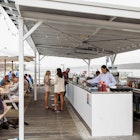
Aug 21, 2024 • 4 min read

Jun 20, 2024 • 6 min read

Feb 27, 2024 • 6 min read

Feb 9, 2024 • 12 min read

Dec 3, 2023 • 8 min read

Nov 29, 2023 • 10 min read

Nov 20, 2023 • 6 min read

Melbourne's public transport system
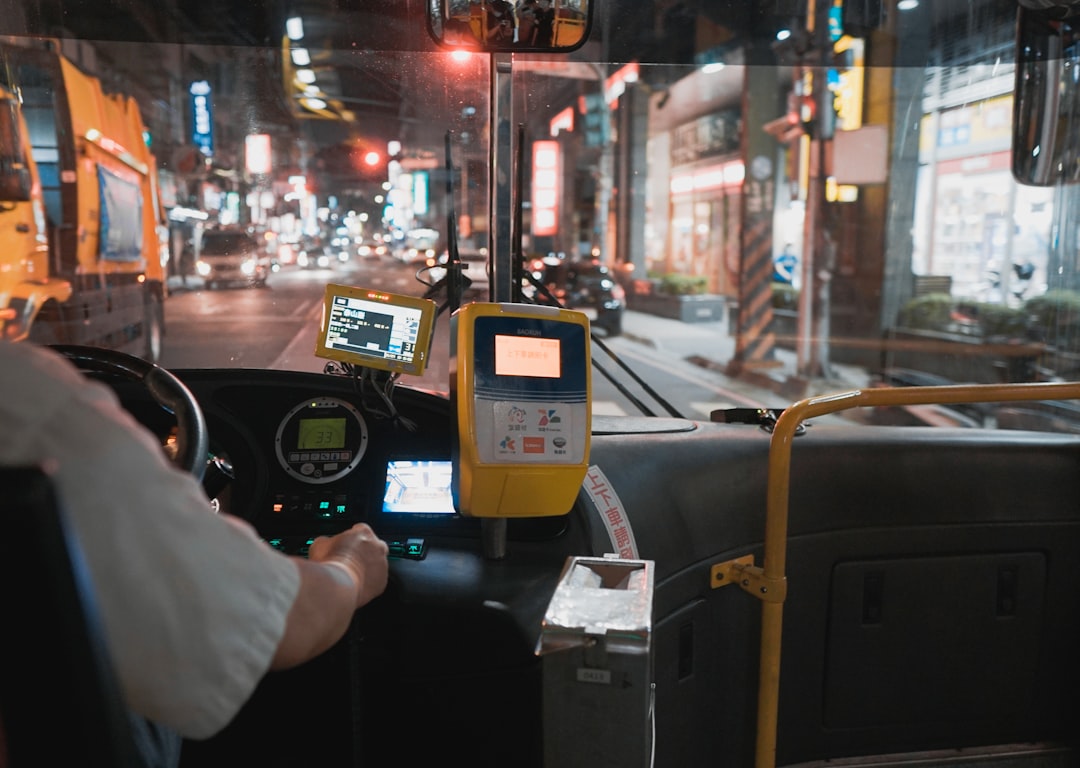
Is your head spinning just thinking about exploring Melbourne's public transport system? If so, don't sweat it – you're not alone! The city's complicated web of bus, train, and tram routes can be overwhelming, and staying up-to-date with service changes can be a full-time job.
But fear not – we've got your back! In this in-depth guide, we'll show you how to juggle the ins and outs of Melbourne's public transit system, giving you the confidence and know-how to whip around town with ease. From maps and timetables to top tips to keep you on track, let's dive in and explore Melbourne's public transport system.
Overview of Melbourne's Public Transport System
Melbourne is recognized as one of the most liveable cities in the world and it has a great public transport system to match. It offers plenty of options, covering all regions of metropolitan Melbourne and Victoria, ranging from metro lines and trams to buses, regional trains and even taxis. With many affordable ticketing options available, exploring what Melbourne’s public transport system has to offer is an exciting journey.
The strength of the public transport system lies in its integration and diversity. As seamless travel is a major priority, there are several initiatives being undertaken. These include improved timetables, a wide range of fare types, detailed station maps and other features such as park and ride facilities and Wi-Fi access on some routes. Additionally, efforts have been made to ensure greater accessibility for everyone, with improved services for people with disabilities and special needs.
Having said that, the public transport system does have some drawbacks. Trains can be overcrowded during peak hours and breakdowns are not unheard of. The issue of safety also arises for people who use late night services or walk/cycle to stations in more isolated areas. Additionally, bus services – especially in rural areas – can be unreliable due to traffic congestion or other factors.
Overall, Melbourne's public transport system is comprehensive and generally reliable. If used wisely, it can provide convenient journeys that are affordable too – helping you get where you need to go without worrying about parking headaches or expensive car maintenance costs. In the next section we will dive into greater depth by looking at specific metro lines and train rides around Melbourne city and further afield.
Metro lines and Trams & The Train Rides
Once you have an overall understanding of the public transport system in Melbourne, you can start exploring the individual components which help make this extensive network possible. Metro lines and trams represent two of the key elements of Melbourne's public transport system and provide something to look out for when discovering this dazzling city.
The metro lines are great for travelling within the city, as they stop at all major locations and points of interest. Whether it's a trip to the iconic Queen Victoria Market or a quick ride over to Luna Park, a metro line will often be the most convenient option. It is also important to note that Melbourne takes pride in having the largest urban tramway network in the world and taking a ride on one of these trams is always an interesting experience. The trams travel all around Melbourne’s centre and suburbs, and journeys are usually quite fast and comfortable - although there tends to be a risk of overcrowding during peak times.
The train rides can also give insight into wonderful places and friendly spots outside of Melbourne’s main central business district. Regional train rides offer passengers breathtaking views ranging from striking coastal sites to valley vistas set against rolling hills. Furthermore, if you are looking for more distant adventures, interstate trains depart daily from Southern Cross Station to destinations all around Australia’s eastern coast, such as Sydney and Brisbane.
Riding around with these various methods of transport provides good opportunities to find hidden gems scattered throughout the Greater Melbourne area, while giving yourself some much needed breathing room after a day in one of the busiest cities in Australia. So whether you choose to opt for metro lines, trams or trains, be sure to take an adventure and explore what diverse wonders await! With this kind of knowledge under your belt it may be time move onto evaluating different fare payment options and planning your next journey through Melbourne's public transport system!
Different Options for Using Public Transport in Melbourne
When deciding which mode of transport to use when exploring Melbourne, there are several different options available. Metro lines are an efficient way to travel around the city with quick and direct routes, while trams and trains provide a scenic journey through Melbourne. Some may debate which is better or more cost-effective, but both offer viable solutions for commuters.
Metros can often be quicker and direct routes, hopping from one popular destination to another without unnecessary stops making them ideal for busy commuters who have somewhere specific to go in a timely manner. Trains however, provide a picturesque journey around the city, letting passengers observe the diverse sights that Melbourne has to offer. Often cheaper than metros and involving fewer transfers, they provide an enjoyable experience as well as transportation.
In order to get the most out of exploring Melbourne's public transport system, its important to research all the different modes of transport available so that commuters can make an informed decision on which is the best option for travelling throughout the city. From accessing further destinations by bus and purchasing tickets, paying attention to details like these can help visitors discover all that Melbourne’s public transport infrastructure has to offer.
Buses and Destinations & Tickets
Buses are often the most convenient way to get around Melbourne for short distances, especially in suburban areas. Some bus routes have express services that run during peak hours and travel to popular destinations such as the airport or shopping centers quickly.
When it comes to buying tickets for buses, or any public transport in Melbourne, there are 2 main options. The first is Myki cards, a prepaid card that has to be charged with funds before travelling. Myki cards can be bought from newsagents, 7-Eleven stores and selected train stations. Alternatively, customers can purchase single-use paper tickets which are valid for up to 2 hours of travel and cost more than a Myki fare for the same journey.
Deciding which option is better depends on an individual's needs. Myki cards might offer cheaper fares but require a setup fee and payments topped up every now and then. Paper tickets might require more money but also allow people who don't usually use public transport to access buses without committing to a prepaid card.
Having explored the different options available when using buses in Melbourne, it is now important to know how to find which routes are accessible and how they should be used effectively.
Directions to Accessible Routes and Services
Now that we have discussed buses and destinations, as well as ticket types, let’s turn to directions on how to access the accessible routes and services. Navigating Melbourne’s public transportation system can be especially challenging for those with mobility issues, so it is important to spotlight directions to accessible routes below. There are several options available:
1) Online Trip Planner- Melbourne has an online trip planner. You can use the planner to choose the most accessible route for your trip, including those that offer wheelchair access or audio descriptions. The website also provides detailed information about points of interest along the way, popular destinations, and fare costs for each route.
2) Accessibility Focused Apps- The “MyAccess Victoria” app provides easy-to-follow guidance for users with disabilities as they plan out their trips around the city. It features comprehensive accessibility maps of bus stops and train stations, making it easier to find the best route tailored to each user's specific needs.
3) Scheduled Tours- For those who require further assistance in navigating public transport, organized tours may be a good alternative. Organizations such as Melbourne Accessible Tourism provide scheduled tours that guide visitors through gentle explorations of Melbourne’s top attractions while helping them learn efficient ways to use public transit. This can be a great way for travelers with disabilities or mobility issues to take full advantage of all that Melbourne has to offer!
These resources provide invaluable assistance when planning trips throughout the city and make it easier than ever for all passengers—regardless of ability—to explore Melbourne’s vibrant neighborhoods with ease. From here, we will delve into journey planning and gain an understanding of some of the differences between routes, so stay tuned and ready to investigate further!
Journey Planning & Route Differences
Journey planning and route differences are essential components to consider when exploring Melbourne’s public transport system. Through comprehensive journey planning, travelers can track the fastest route using various modes of transport and save time. For users with limited mobility, understanding available routes and services is especially important when planning a journey.
When it comes to planning a trip, there are several services that can help travelers determine their best route. The Public Transport Victoria website provides timetables, service updates, interactive maps and access to the Journey Planner tool which can help travelers create custom routes based on origin, destination and departure times. In addition, the TripView App allows users to plan trips by train, tram and buses from any location in the city.
Another factor to consider when navigating Melbourne’s public transport system is understanding different routes and how they may affect traveling times. Generally speaking, travelling via express trains or premium trams may reduce commuting times however they can be expensive if not qualified for a concession fare. On the other hand, alternative routes may be slower yet more cost effective for travelers on a budget.
Ultimately, journey planning and route differences need to be carefully considered depending on individual preferences and needs. It’s important to compare all options before deciding on a particular route as this can often make a huge difference in terms of economy or speed. Taking into account available services will also help ensure an easier journey for those with special requirements such as those with restricted mobility or specific access requirements.
How reliable is Melbourne's public transportation system?
Melbourne's public transportation system is generally considered quite reliable. Schedules are regularly updated, and buses and trains typically arrive on time. Furthermore, Melbourne has invested significant capital into their public transportation infrastructure over time, as well as high levels of service such as increased frequency during peak hours and timely maintenance management to ensure a safe and reliable experience. All in all, Melbourne's public transportation system operates efficiently and allows for a comfortable commute around the city. Whether to or from a hotel in Melbourne or to the airport to catch a flight, the system has you covered.
How much does it cost to use Melbourne's public transportation?
Using Melbourne's public transportation typically costs between $4.20-$7.30 for an adult one-way ticket, depending on the zone one is travelling in and the type of ticket purchased. For regular commuters, a myki card can be used to get around Melbourne at discounted rates. myki cards are available from many outlets across Melbourne, including railway stations, authorized retailers and self-service machines. Additionally, concession fares can be paid by students or seniors with valid ID cards. These fares cost $2.60-$3.90, depending on the zones and again, the type of ticket purchased.
What form of transportation is available in Melbourne?
Melbourne boasts an extensive and reliable public transport system. The public transport options available in Melbourne include trams, buses, trains, ferries, and regional V/Line services.
Trams are considered to be the iconic form of Melbourne's transport system, with more than 500 kilometres of track running through the city. They are a popular way of getting around, connecting many of the inner suburbs and city centre.
Buses cover a wider area than trams, servicing more suburbs as well as providing easier access for those living in outer suburbs or visiting more remote places throughout Melbourne. They generally operate on longer routes and at higher frequencies during peak times.
The metropolitan train network consists of 16 lines that span across 274 stations throughout Melbourne. The suburban railway is divided into two zones – zone 1 covers the CBD and most inner-city suburbs while zone 2 covers parts of the outer suburbs.
In addition to these primary forms of public transport, Melbourne also has ferries operating along the Yarra River. There are also long-distance services operated by V/Line Regional Railways which take people out of Melbourne to places such as Geelong or Bairnsdale.
Overall, there is no shortage of options when looking for transport in Melbourne; whatever your journey is you are sure to find the right form for it.
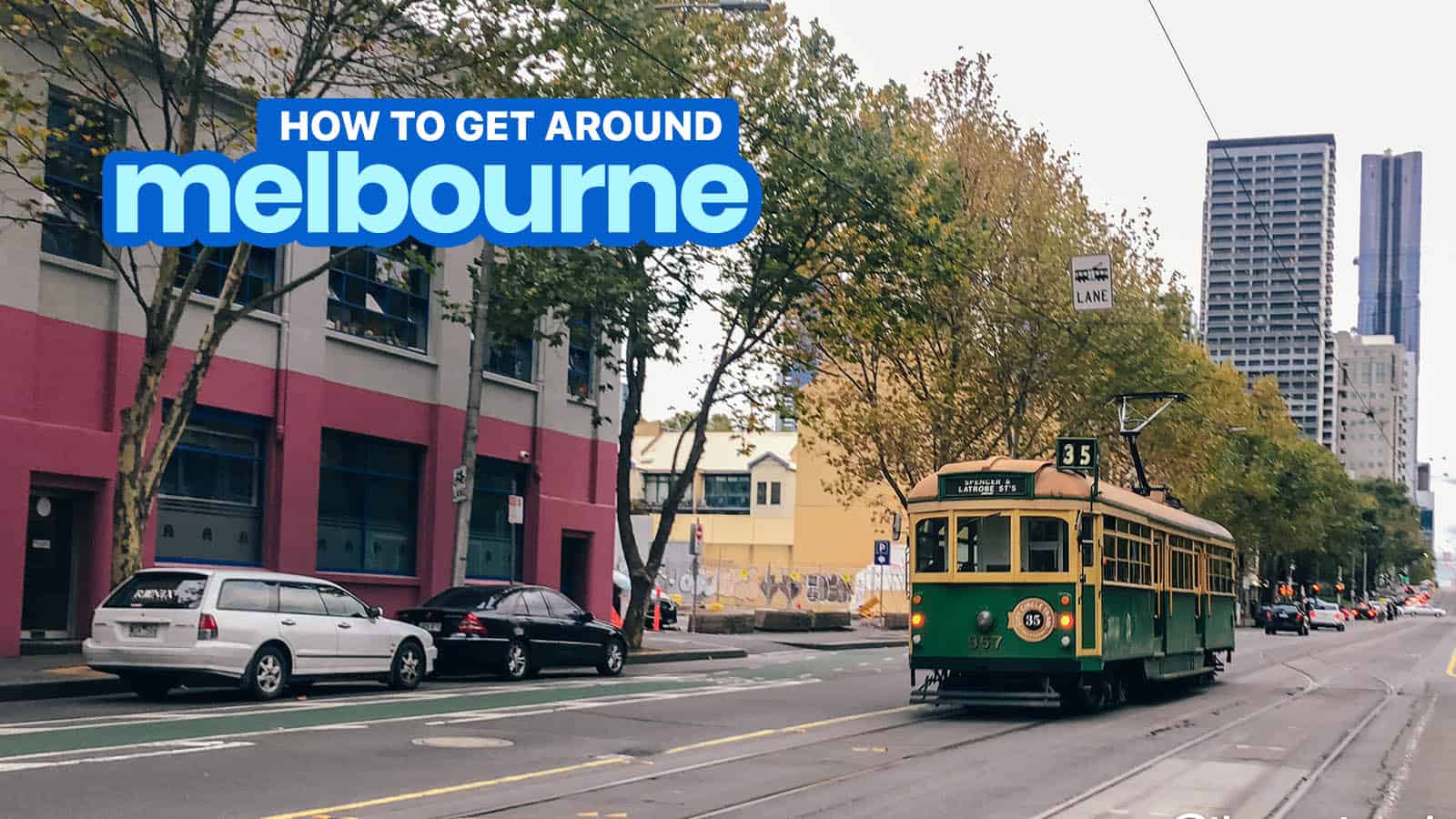
GETTING AROUND MELBOURNE: How to Use Myki Card + Tram, Train, Bus

Melbourne is widely regarded as the city with the best transportation system in Australia. With its impressive and expansive network of tram, train, and bus lines, Melbourne should be quite easy to explore. And it was. I found myself enjoying the journey from one attraction to another. However, it wasn’t always like that.
On my first couple of days in Melbourne, I was extremely overwhelmed by its public transportation services. The route network itself is easy to digest. It was the pricing and the whole myki system that I found too confusing. Thankfully, it was only in the beginning. Once I got the hang of it, everything went smoothly.
In this post, I’ll try to explain how the myki card works and how to use Melbourne’s public transportation as simply as I can.
WHAT'S COVERED IN THIS GUIDE?
Melbourne’s Transport Zones
First, it’ll be helpful to understand Melbourne’s transport zones. The metropolitan area of Melbourne is divided into three zones:
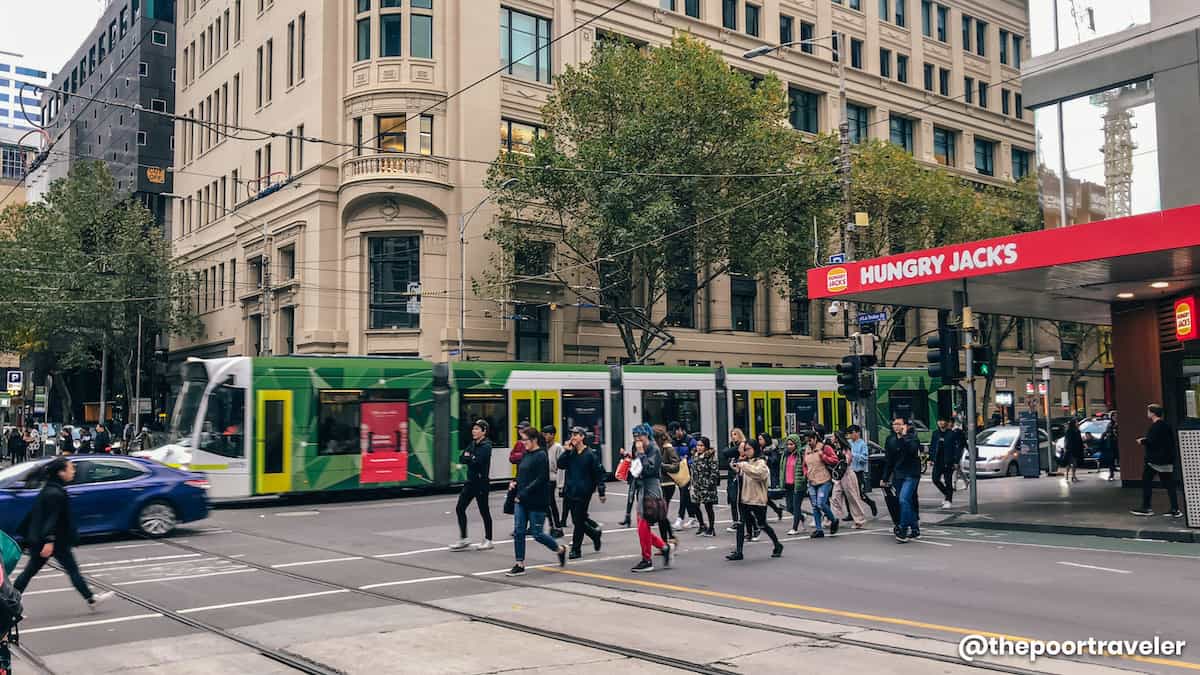
- Free Tram Zone spans much of the Melbourne CBD. When traveling by TRAM within the zone, you don’t need to pay for anything. For tourists, this is very useful because several tourist attractions are located within this zone. The Free Tram Zone is part of Zone 1. I’ll discuss it further in the next section.
- Zone 1 covers the city center and some suburbs in the outskirts of the city.
- Zone 2 covers the suburbs farther away from the city center including Werribee and Frankston.
The rail map below illustrates this better. Stations along yellow lines are within Zone 1, while those in blue are within Zone 2.
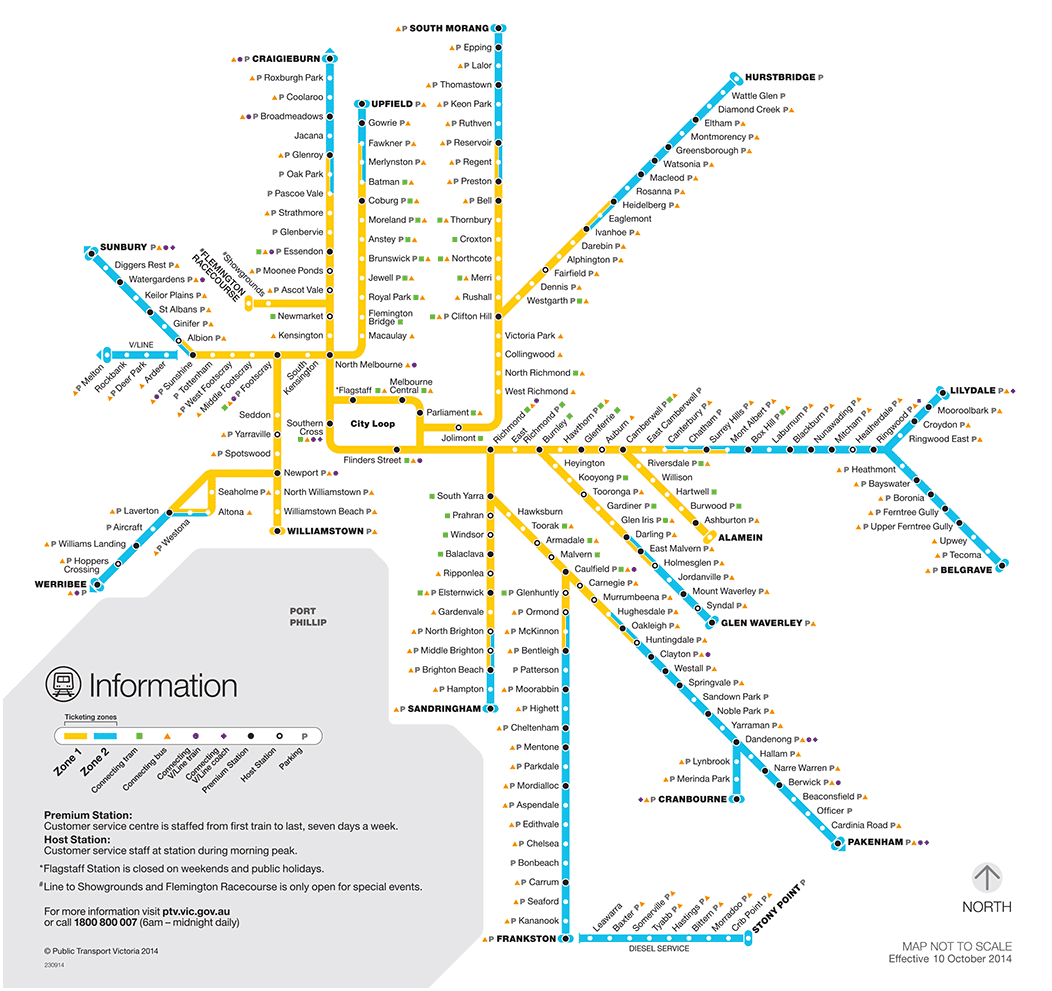
These zones dictate the fare. A different fare applies when you’re traveling within Zone 1 and traveling within Zone 2. But when you’re traveling BETWEEN Zones 1 and 2, the fare is the same as traveling within Zone 1. Here’s a quick summary of these fares.
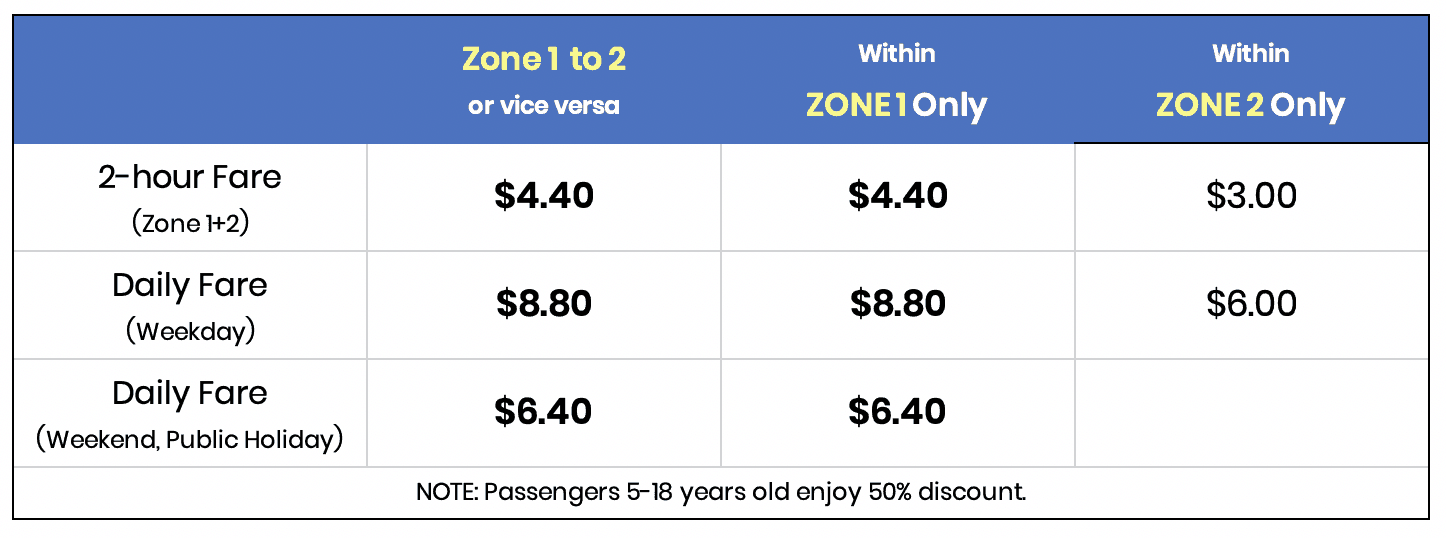
I’ll explain these fares further below.
But if you’re traveling within the FREE Tram Zone, you don’t need to pay anything because it’s, well, free.
FREE Tram Zone
For visitors, one of the best things about Melbourne is its iconic FREE TRAM . You don’t need to get any sort of pass or ticket to avail of this; just hop into the tram. It’s FREE as long as you’re traveling WITHIN the FREE TRAM ZONE.
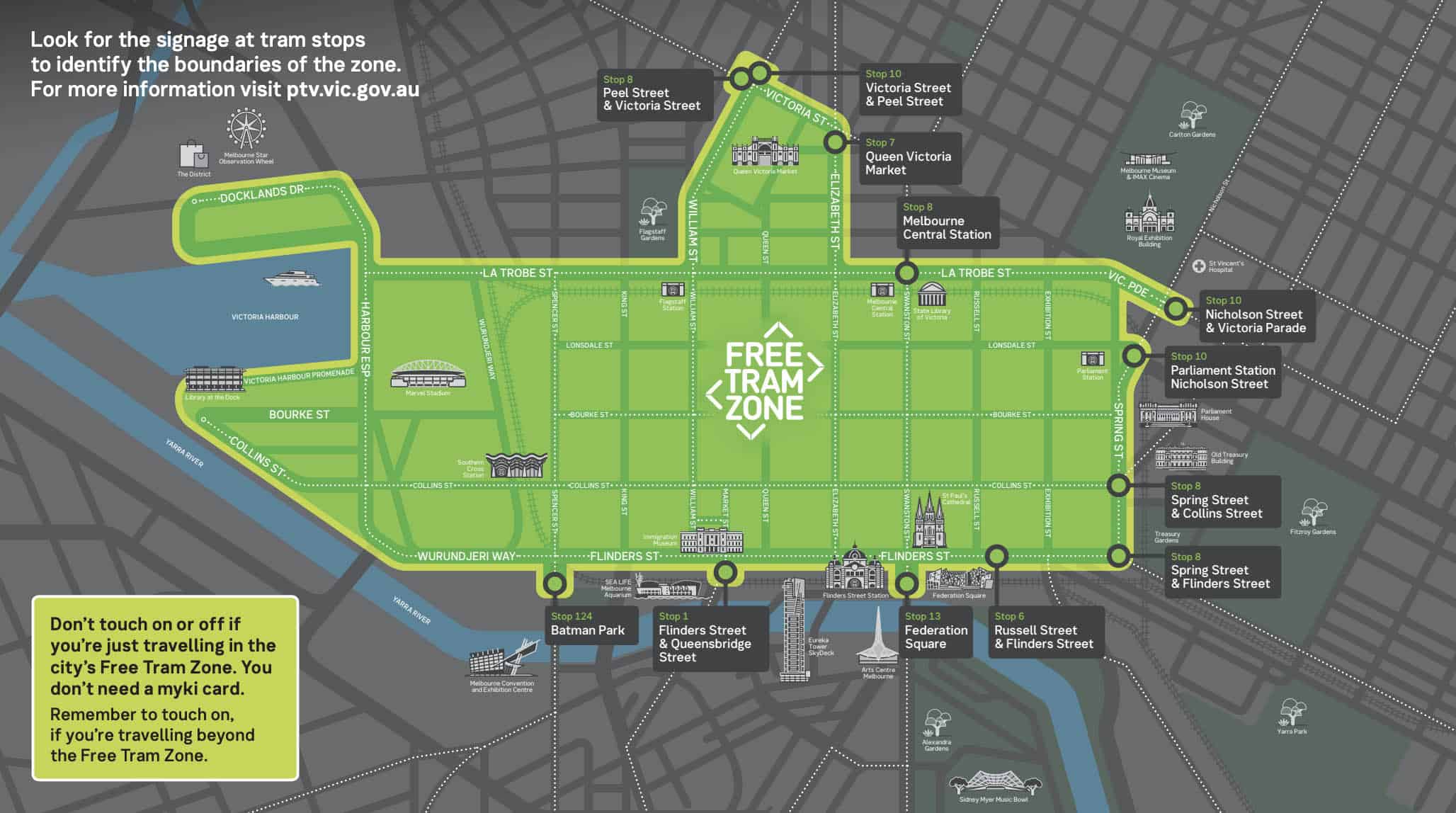
If your starting or ending point is outside the zone, the A$4.40 rate will apply.
Outside the free tram zone, you have plenty of options. But wait, before that, let me introduce to you the myki .
How Does the myki Card Work?
The myki is an electronic stored-value reloadable smart card that is used in all public transportation services in Melbourne — bus, tram, train. With this card, you can easily get around the city and even the surrounding suburbs. Cash isn’t accepted anymore. Even if you’re a tourist staying in Melbourne for a few days, you will need to get a myki card if you want to use the public transportation system. And that’s a problem because the myki system is just so confusing especially for tourists.
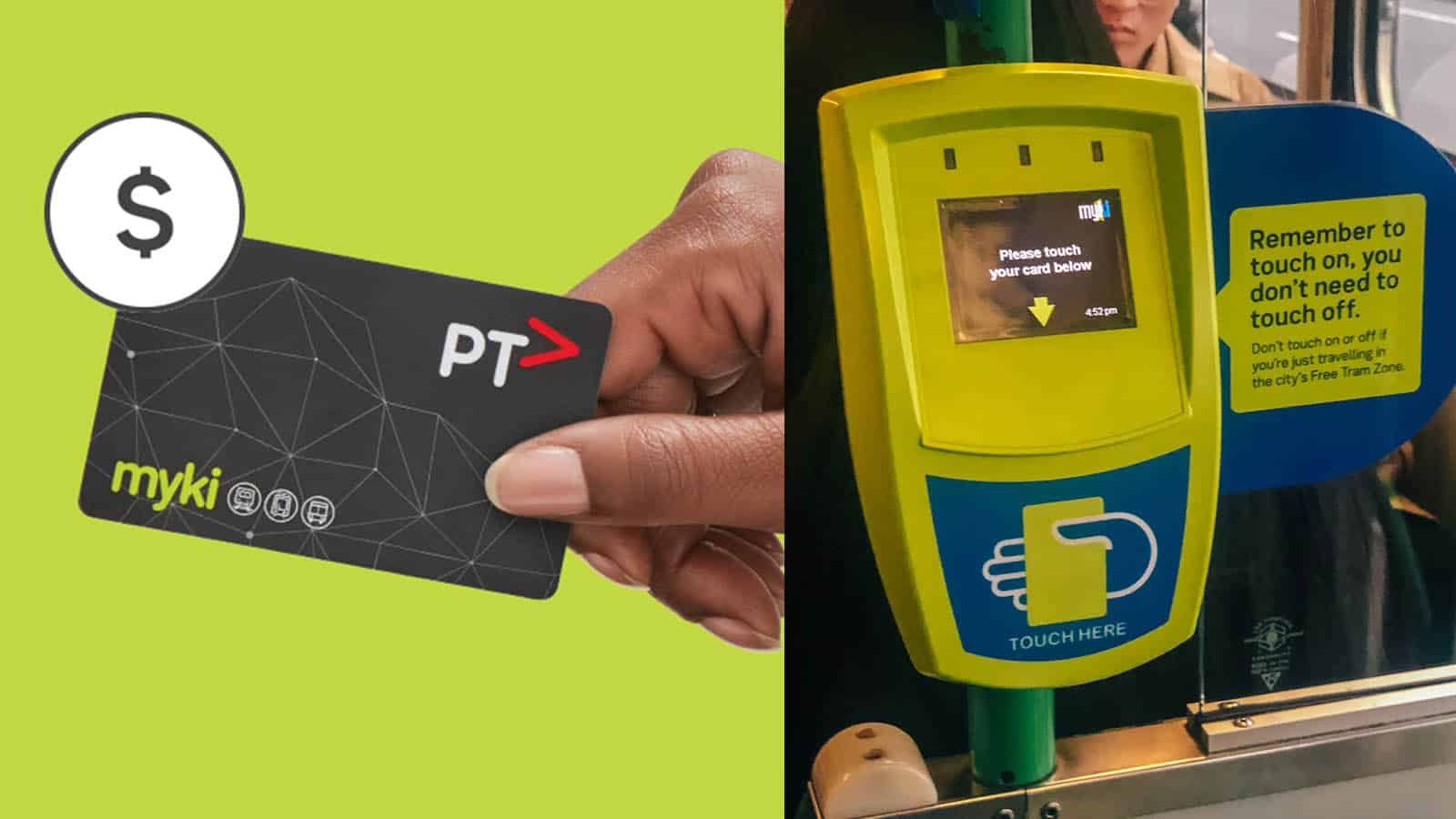
So how does it work? Well, it works just like Hong Kong’s Octopus card or Tokyo’s SUICA/PASMO card. You “touch on” the card — hover the card above the reader — before entering the train station or boarding the bus/tram and “touch off” when you reach your destination. But it’s a lot more complicated.
Here are some important points.
- The card costs AUD 6. That’s just for the card itself. You will need to top it up after.
- The standard fare is AUD 4.40, which is good for 2 hours — that is 2 hours from the moment you first use or touch on the card. However, if you touch on after 6pm, the 2-hour fare is valid until 3am the next day.
- The daily fare is AUD 8.80. This is the maximum you can spend per day as long as you’re traveling within Melbourne City (Zone 1) and suburbs (Zone 2). Meaning, if you use the card once, you’re gonna get charged A$4.40 for the first 2 hours. If you use it again after 2 hours, you’ll be charged A$8.80, valid for another 2 hours. But if after 2 hours, you decide to use it again, you will no longer be charged because the A$8.80 daily cap is already reached. Same with succeeding uses on that day. It sort of automatically becomes an unlimited pass.
- On weekends, the daily cap is only AUD 6.40. Same reduced rate applies to public holidays.
- A 7-Day myki Pass is available for only AUD 44. This is a good deal if you’re exploring Melbourne for 7 days. Note that these are consecutive days.
- Passengers 5-18 years old can avail of the 50% concession discount. The card price becomes only A$3, weekday fare A$2.20 for 2 hours, daily rate A$4.40, weekend daily cap A$3.2, and 7-day pass cost A$22. Passengers younger than 5yo can travel for FREE.
- You don’t need a myki when traveling by tram within the FREE Tram Zone. If you have a myki, you DO NOT need to touch on your card if within the Free Tram Zone. But if your starting or ending point is outside the zone, the A$4.40 2-hour rate will apply.
Here’s a quick summary of the fares (as of 2019).
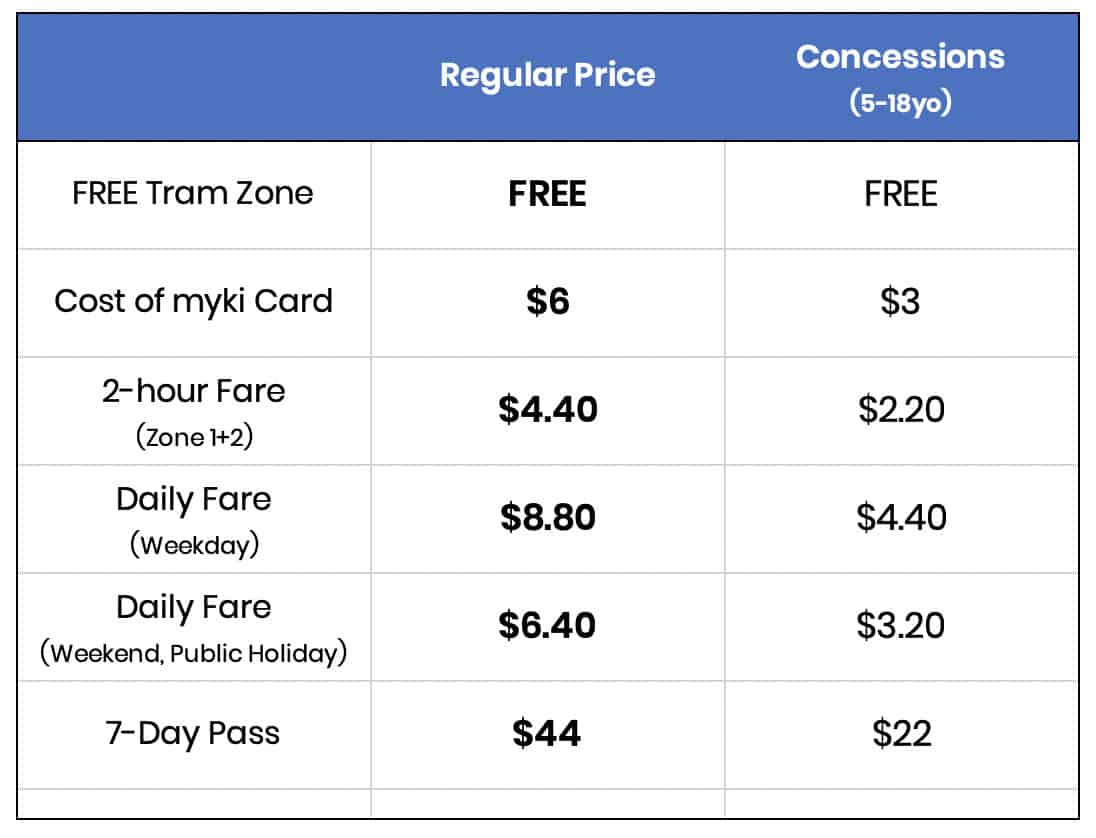
A lower fare applies if you’re traveling within Zone 2 (farther suburbs), but as a tourist, you’re probably gonna be coming from Zone 1 so I decided not to break it down in the table above to avoid making this a lot more complicated.
How to Use Melbourne’s Trams, Trains & Buses
Having a lot of available transportation modes is both great and confusing. How do you know which is the best option for your desired destination?
If you own a smartphone, you can download the PTV app. PTV stands for Public Transport Victoria, the agency that governs and runs the tram, train, and bus systems in this part of Australia. You can download here: iOS , Android .
On the app, enter your origin and destination. If you’ve allowed the app to use your location, it can show you the station nearest you. It will then present a selection of routes that you may take. Pick one based on your schedule and preferences.
Then follow these:
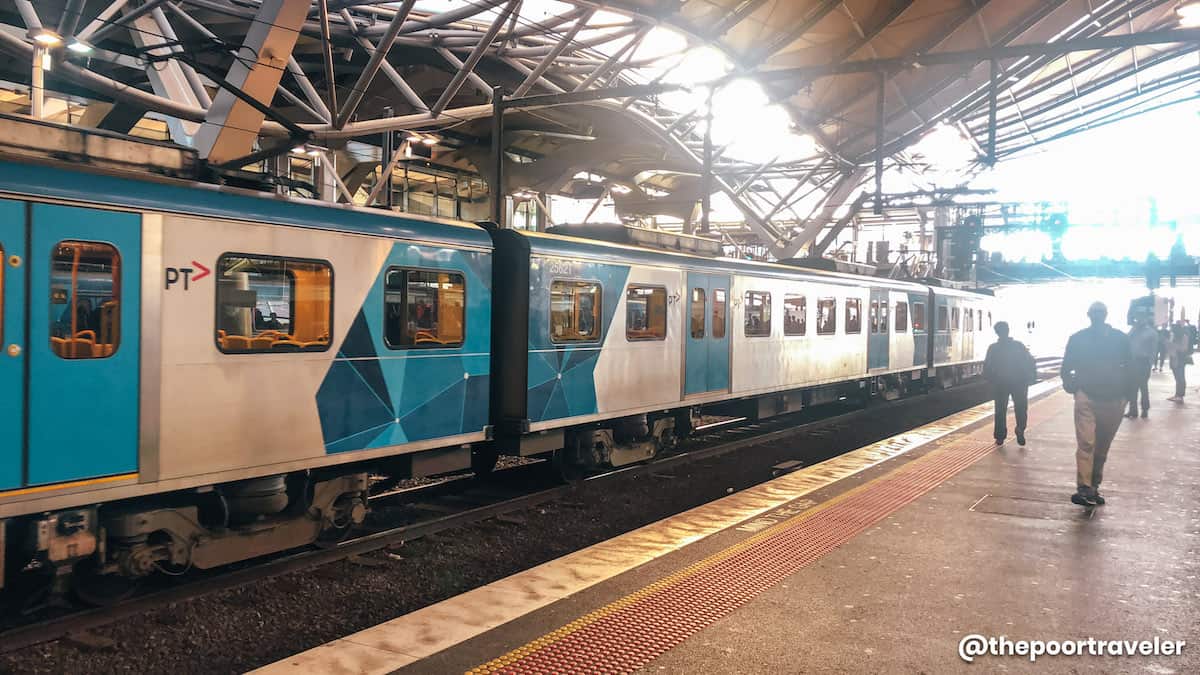
- Touch on your myki card as you enter the station. You will find myki card readers at the entrance gates.
- Head to the designated platform. You’ll see the platform number on the PTV app. Also look for signs to double check. You’ll find the train timetable at the platform. Check out the signs on the train or at the platform to make sure you’re boarding the right train.
- If you’re making a transfer, no need to touch off the card UNLESS there are barrier gates in between.
- Touch off your myki card as you exit the station.
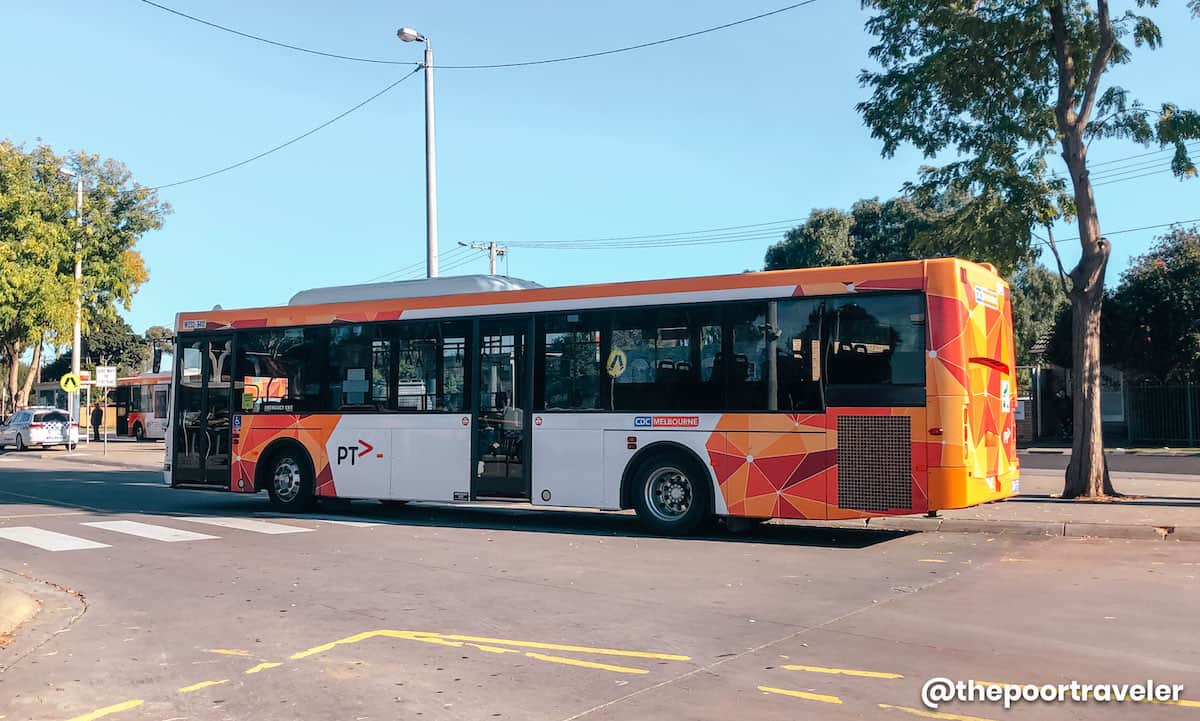
- Make your way to the bus stop. There usually is a timetable displayed at each stop.
- When your bus arrives, hop in.
- Touch on your card as you enter. You’ll find the myki readers onboard the vehicle.
- When you reach your destination, don’t forget to TOUCH OFF before alighting the bus.
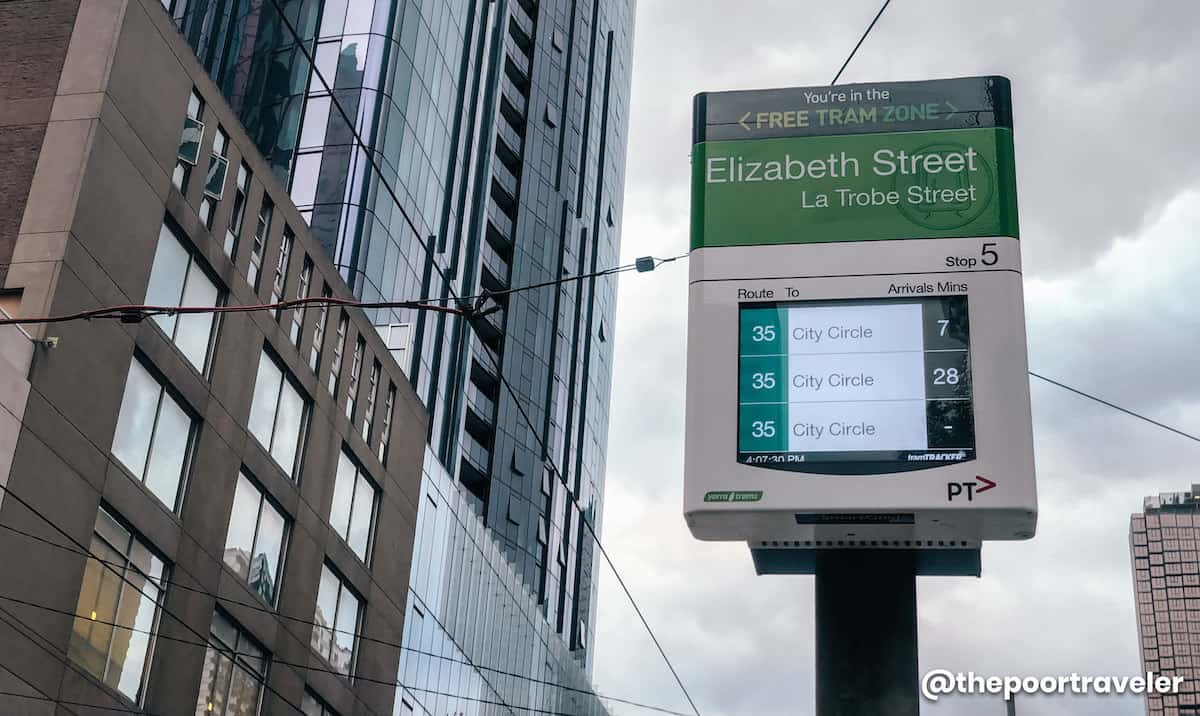
- Make your way to the tram station. There usually are timetables posted at each stop. Often, there’s also a digital screen announcing what trains are coming next and at what time. You can refer to this to make sure you’re boarding the right tram.
- When your tram arrives, hop in. If you’re traveling within the FREE tram zone, NO NEED TO TOUCH ON. If you’re traveling Zone 1+2, you must touch on. but you don’t need to touch off.
- When you reach your destination, NO NEED TO TOUCH OFF if you’re traveling Zone 1+2 or if within FREE Tram Zone. Touch off only if you’re traveling within Zone 2.
IMPORTANT! When traveling outside the free tram zone, don’t forget to touch on your myki. It’s actually easy to game the system and deliberately skip touching on to save dollars, but please DON’T do it . It’s also easy to forget to touch on. But bear in mind that sometimes, ticket officers show up and inspect random passengers’ cards. If you’re caught not paying the right fare, you may be fined around A$250! I’ve seen this first-hand at Werribee Station. Several ticket inspectors checked the myki of alighting bus passengers.
Other Transportation Options
Of course, the public transportation system isn’t perfect. Delays happen and some stations are sometimes temporarily closed for various reasons. One time, the tram that I was on had technical issues and all the passengers were asked to step out and wait for the next tram (which took forever to arrive). They don’t happen all the time, but if you’re in a hurry and you can afford it, you may take the taxi or Uber.
Uber is generally cheaper than taxi. I once tried taking a cab from Southern Cross to Central Station and I was charged A$ 10.60 for the ride. Another day, I used Uber on the same route and paid only A$ 8.60.
If traveling within CBD, I prefer walking. Melbourne is a very pretty city, with a distinct European vibe that other Australian cities don’t possess. You’ll also stumble upon delightful surprises like artful graffiti and food kiosks.
How to Get to Melbourne
From Manila, fly to Melbourne with Philippine Airlines. Travel time is only around 8 hours.
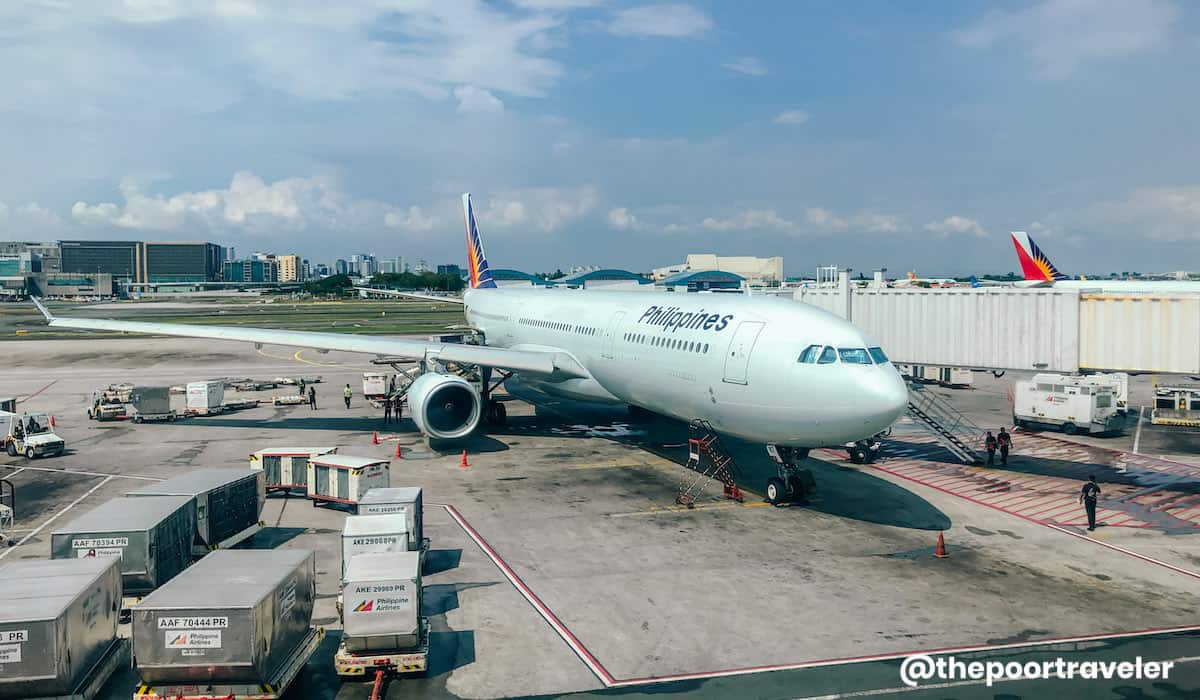
Regular fares can go as low as USD233 one-way, which can still go lower when there’s a promo. All bookings come with FREE 25kg baggage allowance and a hot meal, a snack, and complimentary alcoholic and non-alcoholic drinks.
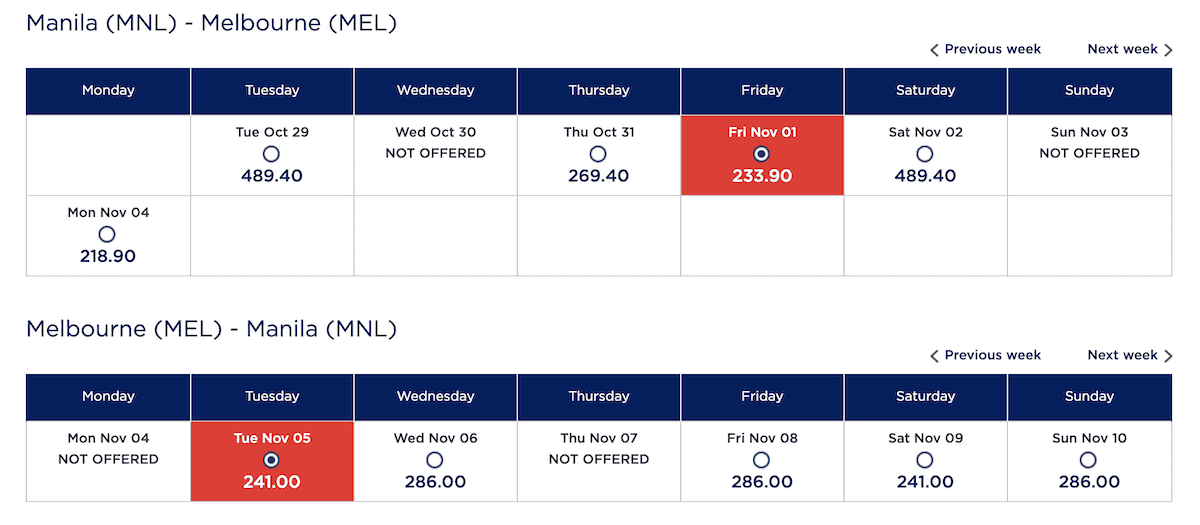
PAL, the country’s four-star flag-carrier, uses a 309-seater Airbus A330-300.
2️⃣0️⃣1️⃣9️⃣ • 6️⃣ • 3️⃣0️⃣
More Tips on YouTube ⬇️⬇️⬇️
Is this post helpful to you?

Related Posts:
- 5 Fantastic Things to Do in Melbourne
- MELBOURNE TRAVEL GUIDE with Budget Itinerary
- MELBOURNE AIRPORT TO CITY CENTER: The Cheapest & Easiest Way
- 8 Popular Stops in Litchfield National Park, Australia: A Day Tour Itinerary
- DARWIN ON A BUDGET: Free Itinerary & Travel Guide
- Australian Outback: Uluru Camel Tour at Sunrise
- Aboard the Derwent Hunter: Sailing Around the Whitsunday Islands, Australia
- BRISBANE TRAVEL GUIDE: Itinerary, Budget, Things to Do

- Recent Posts
- U.S. TOURIST VISA APPLICATION Requirements & Process for Filipinos + Interview Questions - 4 August 2024
- WHERE TO SHOP IN BANGKOK • Top 8 Shopping Centers and Malls - 29 July 2024
- Where to Eat Cheap in BANGKOK • Our Take on 13 Best Affordable Restaurants (incl. Michelin Guide Restos) - 13 July 2024
Featured On

We heard you!
Your comment is now queued for moderation! We’ll try to get back to you soonest. While waiting, follow us on these channels.
Subscribe on Youtube! Follow us on Instagram!

Melbourne Travel Guide
Courtesy of Boy_Anupong | Getty Images

Getting Around Melbourne
The best way to get around Melbourne is by tram. Trams operate throughout the day and offer multiple routes that criss-cross the city. There's even a free tram designed just for tourists. You can also board Melbourne's buses and trains with the same myki ticket that you'll use for trams. While taxis and rental cars are available, they'll both cost more than public transportation. To avoid the hassle of adjusting to Melbourne's quirky road rules, it's best to avoid driving here.
The Melbourne Airport (MEL) is about 16 miles northwest of downtown Melbourne. You can take a SkyBus from the airport into the city for AU$ 19 ($15). You can also hire a taxi or rent a car.
Explore More of Melbourne

Things To Do

Best Hotels

You might also like

San Francisco
# 3 in Best U.S. Cities to Visit

# 3 in Best Places to Visit in Winter

# 15 in Best Places to Visit in Australia and The Pacific
If you make a purchase from our site, we may earn a commission. This does not affect the quality or independence of our editorial content.
Recommended
The 28 Best Water Parks in the U.S. for 2024
Holly Johnson|Timothy J. Forster May 8, 2024

The 18 Best Napa Valley Wineries to Visit in 2024
Lyn Mettler|Sharael Kolberg April 23, 2024

The 25 Best Beaches on the East Coast for 2024
Timothy J. Forster|Sharael Kolberg April 19, 2024

The 50 Best Hotels in the USA 2024
Christina Maggitas February 6, 2024

The 32 Most Famous Landmarks in the World
Gwen Pratesi|Timothy J. Forster February 1, 2024

9 Top All-Inclusive Resorts in Florida for 2024
Gwen Pratesi|Amanda Norcross January 5, 2024

24 Top All-Inclusive Resorts in the U.S. for 2024
Erin Evans January 4, 2024

26 Top Adults-Only All-Inclusive Resorts for 2024
Zach Watson December 28, 2023

Solo Vacations: The 36 Best Places to Travel Alone in 2024
Lyn Mettler|Erin Vasta December 22, 2023

26 Cheap Beach Vacations for Travelers on a Budget
Kyle McCarthy|Sharael Kolberg December 4, 2023

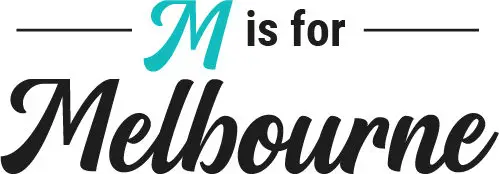
Melbourne Transport Guide: How to Get Around on Public Transport, Bike, Uber and More
Want to know how to get around Melbourne when you visit? In this Melbourne transport guide, I’ll share everything you need to know!
While Melbourne is a fairly big city, spread out over almost 10,000 square kilometres and with just over 5 million people, it’s actually an easy city to get around. Tourists especially will find that there are several Melbourne transport options that will get them to most of the places they need to go quite easily.
While we Melburnians like to complain about trains being late and trams blocking the roads, we really do have a decent public transport system. This is especially so if you’re sticking to the inner city and major tourist areas. We also have plenty of other methods of getting around, so you’ll rarely be stuck anywhere.
In this Melbourne transport guide, I’m sharing all the ways to get around this wonderful city of ours. From trains to trams, Uber to bikes, here’s what you need to know!
This blog post may contain affiliate links, meaning if you book or buy something through one of these links, I may earn a small commission (at no extra cost to you).
What's in this article (Click to view)
How to get from the airport to Melbourne city
Let’s start off with how you get to the city from the airport.
Melbourne has actually two airports: Melbourne Airport and Avalon .
Melbourne Airport (code: MEL, often referred to as Tullamarine) is the largest airport in Melbourne (and second-busiest overall in Australia) and it’s where international flights arrive. This is the closest airport to the city, a 30-minute drive into the central business district (CBD).
The second airport is Avalon (code: AVV), which is further from the city, near Geelong. Right now, only domestic flights are operating here.
How to get to the city from Tullamarine Airport
Melbourne is still without a train to and from the airport, so to get from Melbourne airport to the city, your options are Uber/rideshare or taxi, renting your own car, or taking the SkyBus .
An Uber or taxi will cost you around $45-$75 (up to $100 sometimes during peak periods). There are two taxi ranks, one outside of Terminal 1 and the other at the end of Terminal 4 in the car park. You can estimate your fare with this handy online calculator .
There’s a dedicated Uber pick up area outside of Terminal 2, and Uber and other rideshare vehicles can also collect passengers from outside Terminal 2 (in lane 3) and in the Terminal 4 car park. All these areas are signed.
The SkyBus is a bus transfer that operates 7 days a week. It goes from Melbourne Airport to Southern Cross Station. One-way fares cost from $22. You can buy tickets online here .
There’s also a SkyBus service from Melbourne Airport to St Kilda and Frankston.

For a private transfer that you organise in advance, book online here .
Ask your hotel if they offer an airport shuttle. Some hotels do, but they’re rarely complimentary.
Rental cars are easily accessible from the airport. All the rental companies are located outside Terminal 2. During peak periods, it can be really slow to pick up a car. I like to book hire cars through DiscoverCars as I find they usually have the best range and prices.
You should definitely book a car in advance rather than turning up and hoping there’ll be one available. Although, as I’ll share later, a car really isn’t necessary, unless you’re taking day trips from Melbourne or plan to spend more time in the outer suburbs.
How to get to the city from Avalon Airport
If you decide to book a flight into Avalon because it’s super cheap, remember that you need to also factor in the cost of then getting from the airport to Melbourne.
As the airport is around 50 kilometres from Melbourne, an Uber or taxi will set you back $100-$135.
A far more affordable option is the SkyBus , which costs $25 one way and takes around an hour to get to Southern Cross Station in the CBD.
Melbourne public transport
Melbourne’s public transport system includes trains, trams and buses, and I’ll explain each of these.
Download the Public Transport Victoria app to figure out how to get from A to B on the Melbourne public transport network.
Melbourne myki card
To use public transport in Melbourne, you’ll need a myki card. This is a hard plastic card that you “tap on and tap off”.
Buy a myki card at one of the major train stations or most 7-Eleven stores for $6.
There are two ways of loading money on your card: myki Money and myki Pass. myki Money is best if you’re only in town for a few days, but a seven-day myki Pass will be more cost effective if you’re visiting for a week or longer.
You can check fares using the myki fare calculator .
Recharge your myki at 7-Eleven stores, ticket offices at train stations or the myki machines that are at some tram stops.
When travelling on public transport, you simply tap your myki on the green readers when you get on the tram, or tap it to enter the train station. It’ll then deduct the fare for your trip. You can check your myki card balance at the top-up machines.
When you leave Melbourne, gift your myki card to someone else or leave it at your hotel, as it’s reusable. You can even donate it to charity – there are donation bins at Station Pier and Southern Cross Station. Or just hold on to it if you’re planning to return to Melbourne in the near future (come back, there are so many things to do in Melbourne that there’s no way you did everything in just one trip!).
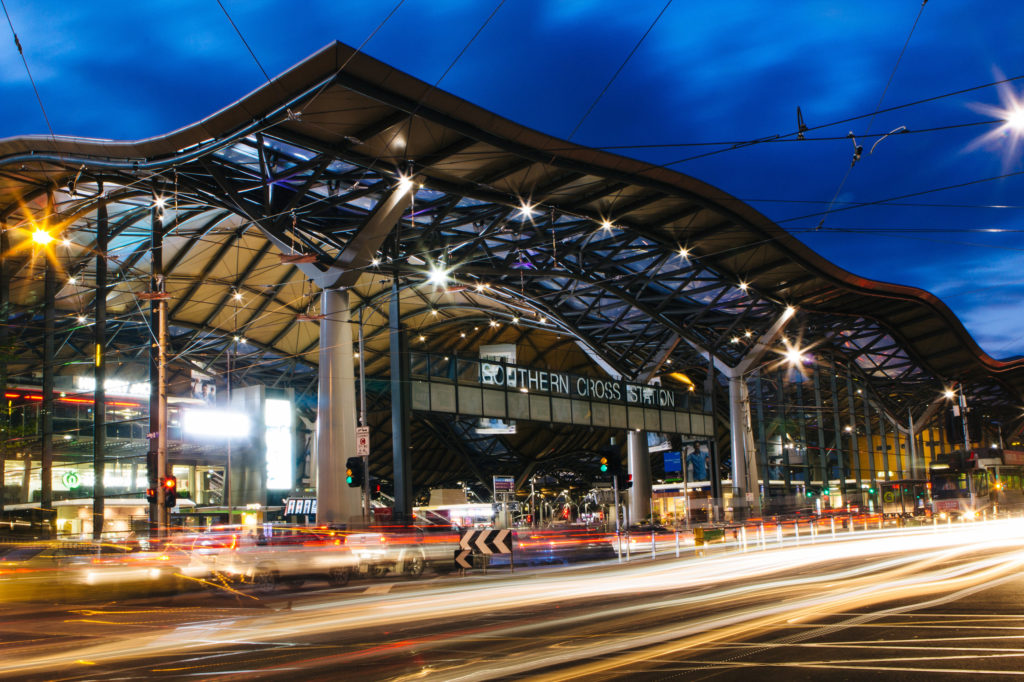
Trams in Melbourne
Trams are great – and can be fun for first-time visitors! Melbourne has the largest tram network in the world.
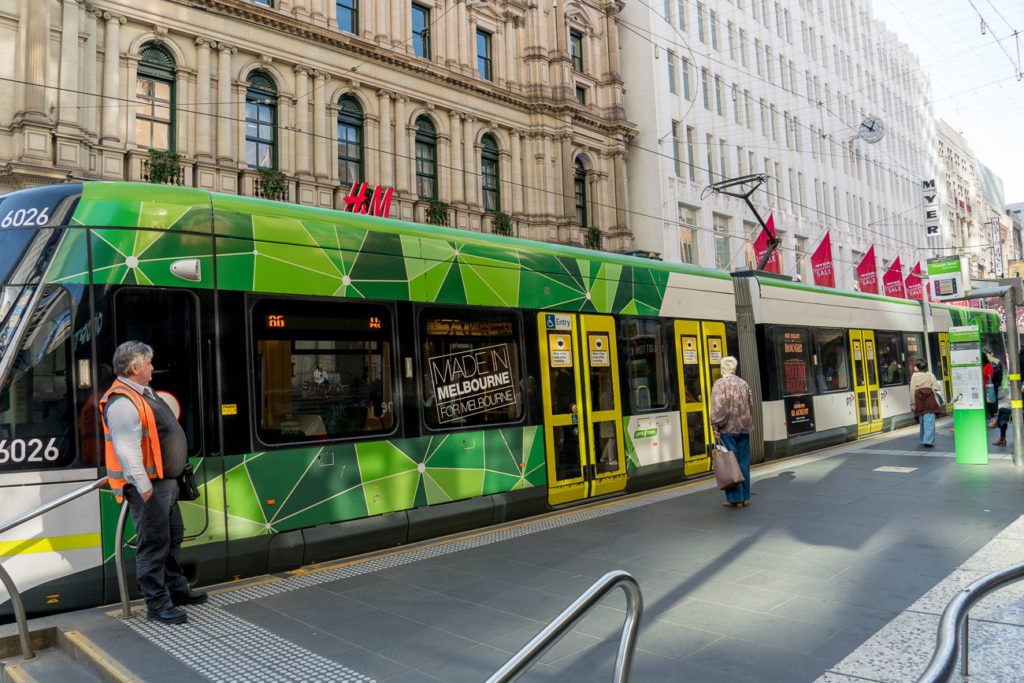
There’s a Free Tram Zone within the Melbourne CBD; the Free Tram Zone map online shows you where you can get around for free. If you’re sticking to the CBD on your visit to Melbourne, you can effectively travel for free if you use trams and your feet.
As soon as you head outside this free zone on the trams you’ll need to get a myki travel card. There are many tram routes in Melbourne, and you can check out the Melbourne tram map here .
You need to tap your myki card against the green card reader inside the tram doors (you’ll hear a beep), but you don’t need to tap when you get off the tram. If you’re in the Free Tram Zone, you don’t need to tap at all.
Warning: trams can stop suddenly, so hold on!
There’s also a Melbourne City Circle Tram that handily passes by some of the major Melbourne tourist attractions (check out the top 25 things to do in Melbourne ). These trams are historic, and come with commentary, and they’re also free. They travel clockwise around the city every 12 minutes or so.
PS. Looking to save money? Check out my guides to free things to do in Melbourne and cheap things to do in Melbourne .
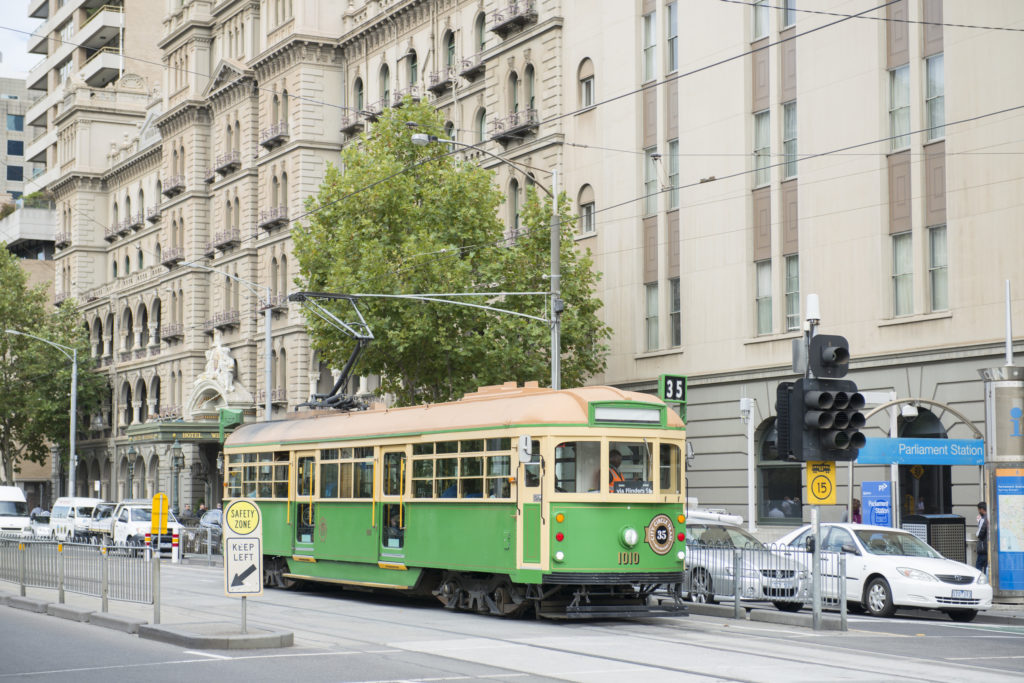
Trains in Melbourne
Melbourne has an extensive train network with links from the city to the outer suburbs. There are 16 train lines on Melbourne’s grid and services are seven days a week. See a map here .
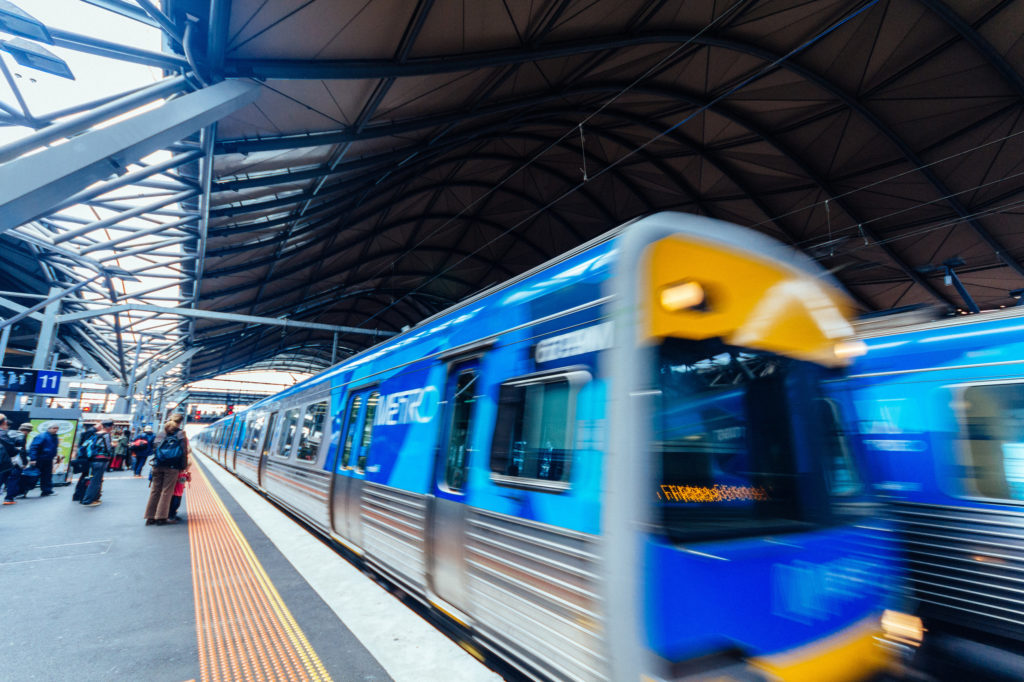
The major train stations within the city are Flinders Street Station, Parliament, Melbourne Central and Southern Cross Station, along with Richmond.
To enter the platforms, you’ll need to tap your myki card to go through the gates, and then tap to exit.
One downside of our train network, though, is if you’re in the outer suburbs and trying to travel to another outer suburb, there’ll rarely be a direct train connection. You’ll need to go into the city and then back out, which is a pain, or find a suitable bus route.
Trains can also be packed like sardines during the morning and evening rush hour, so avoid these times.
And don’t be surprised if there’s a service delay. There are a lot of upgrades going on at the moment, so trains can be delayed frequently, and sometimes trains are replaced with buses on sectors.
There’s also a train network that connects Melbourne to various regional cities and towns in Victoria. These V/Line trains depart from Southern Cross Station and can be a convenient way to explore Victoria. (Check out these day trips from Melbourne for inspiration!)
Your myki card won’t work on V/Line services, so you’ll have to buy a separate ticket.
Buses in Melbourne
Melbourne’s bus network crisscrosses the city. Buses will get you further than a tram will. Check out the network map and bus routes here .
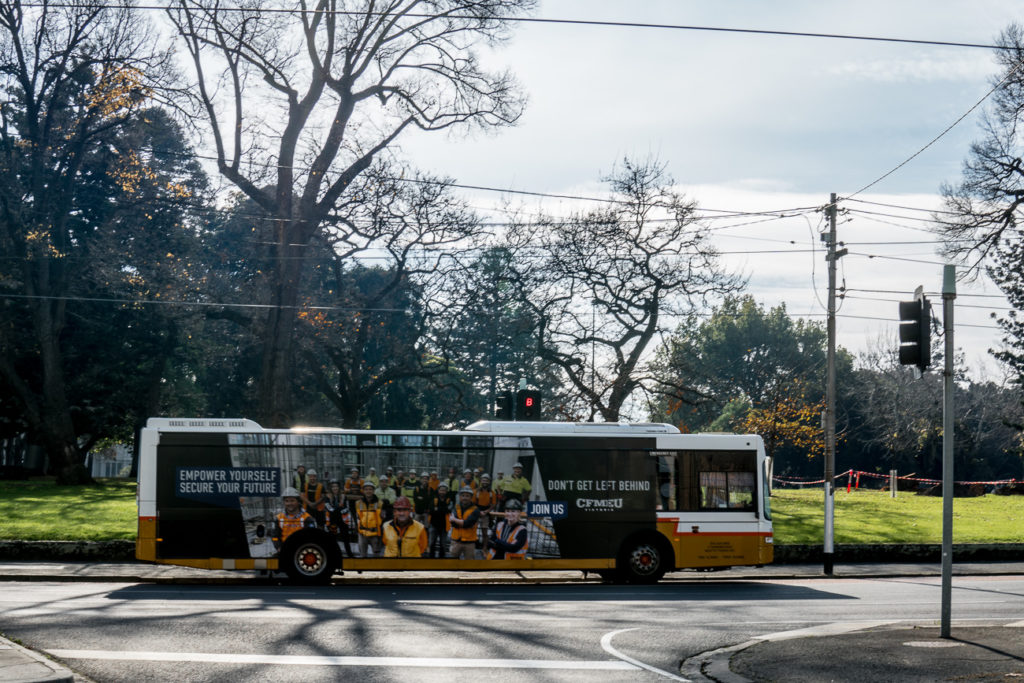
Use your myki card to pay for bus services – tap both on and off.
If you’re checking out Melbourne nightlife , there are also great night services on the weekend.
Keep in mind that buses share the roads with cars, so travelling around Melbourne by bus will be longer than driving – especially during peak hour traffic.
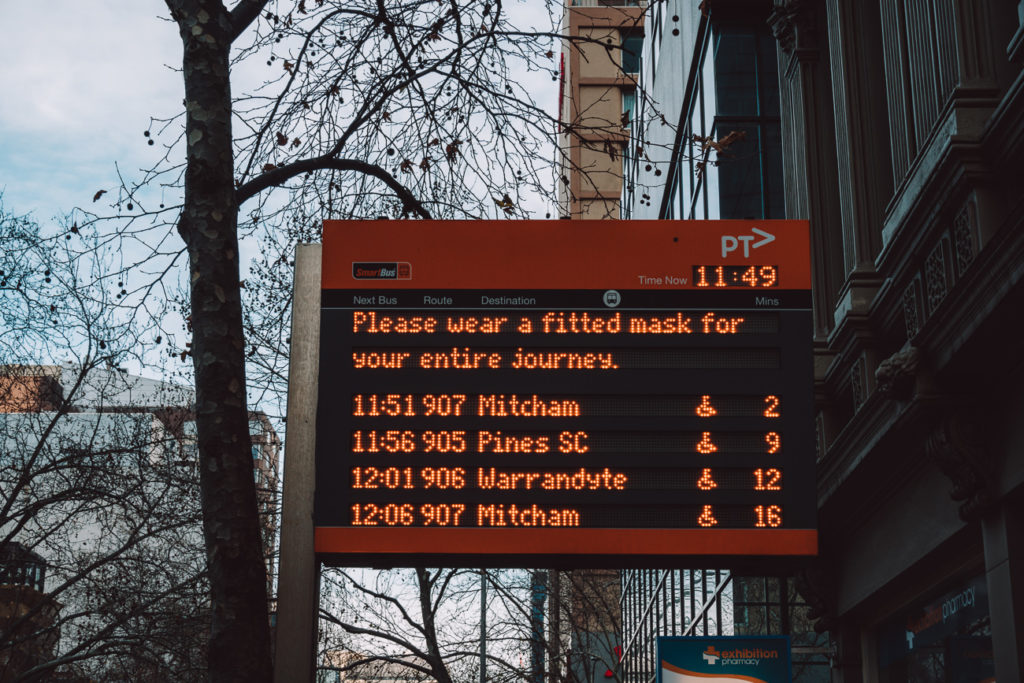
Ride share in Melbourne
In Melbourne, the major ride sharing companies/apps are Uber, DiDi and Ola, as well as Shebah (an all-women service).
They work exactly the same way as in other cities. Simply download the app of the ride share company you prefer and off you go.
The same safety precautions also apply. Always check the registration of the vehicle and confirm the driver’s name before you get in. I always like to share my trip with my husband if I’m travelling alone.
Taxis in Melbourne
You can easily hail a taxi, find one at a designated taxi rank, call directly or book a trip using an app. Taxi ranks can usually be found in front of hotels, out the front of major train stations and other busy areas.
The two taxi services in Melbourne I prefer are 13Cabs and Silver Top . Both have apps so you can pre-book a ride or plan a trip on the fly.
If you’re in a taxi between 10pm and 5am you’ll need to pay an upfront estimated fare. That’s thanks to all the drunken passengers skipping out on paying!
Estimate your fare using an online calculator . Tolls are added to fares.
Car rentals in Melbourne
If you’re just sticking to the inner city when you visit Melbourne, a car won’t really be necessary. You can rely on public transport to get around.
But if you want to do some day trips from Melbourne or get to the outer suburbs, then renting a car can be an affordable way to do it. Check out DiscoverCars for rental options that you can pick up from the airport or at other locations in the CBD.
Parking in the city can be expensive. In inner city areas, many streets have permit-only parking for residents, so pay attention to signage when you park.
We have these weird things called hook turns in the CBD that will confuse the hell out of you! I don’t think they’re anywhere else in the world? But they’re there to avoid disrupting trams.
You will also need to remember to stop for trams.
Only need some wheels for a few hours? Try car sharing through companies like Popcar or GoGet . They have designated parking spots around the city.
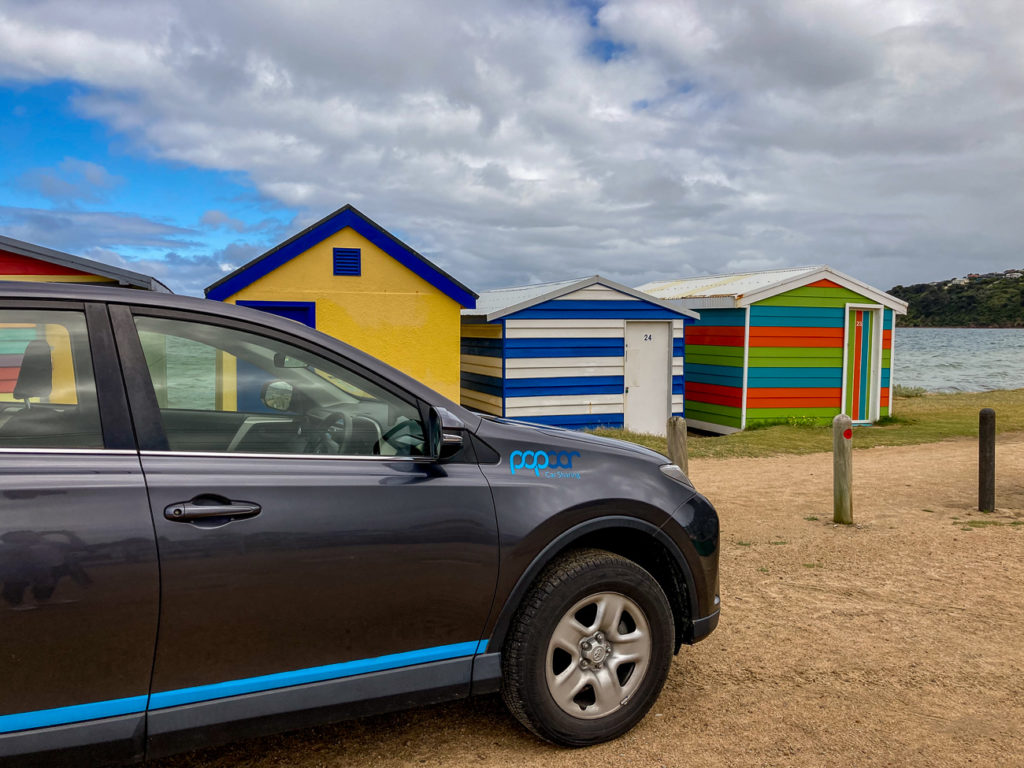
Getting around Melbourne by bike
If you want to burn some energy, it’s easy to get around Melbourne by bike. There are several marked bike lanes around the CBD and inner city.
But do keep an eye out, because some Melbourne drivers are aggressive when it comes to cyclists. By law, helmets must be worn.
Melbourne’s bike-sharing system was unfortunately scrapped some time ago, but you can rent a bike from a private company like Blue Tongue Bikes .
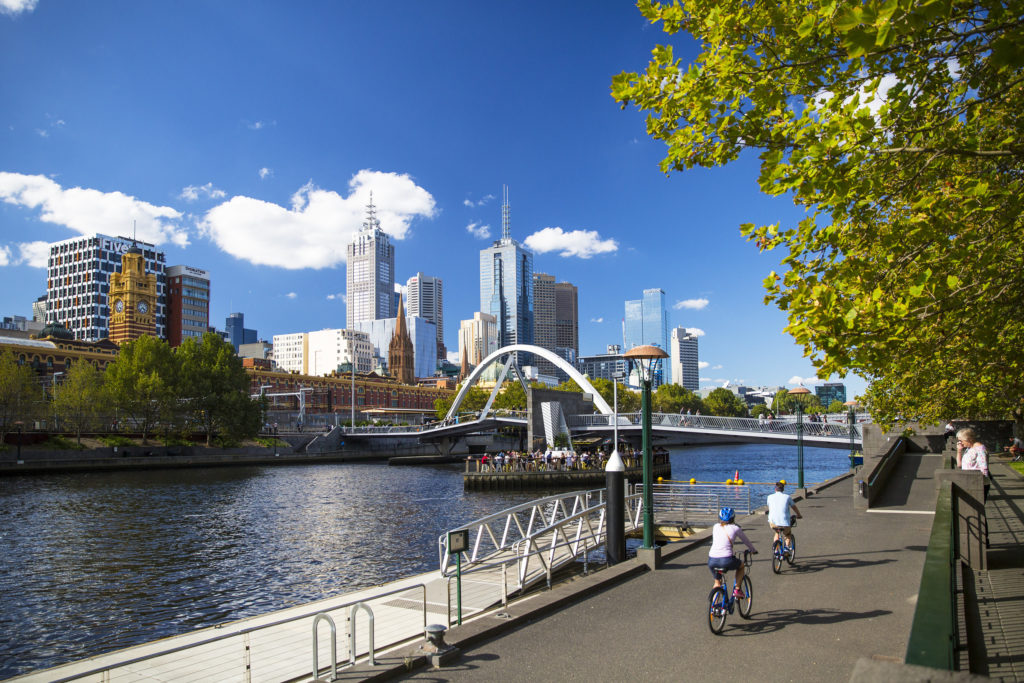
e-scooters in Melbourne
The City of Melbourne has been trialling the use of e-scooters in the inner city. Download the Lime or Nueron apps to unlock an e-scooter like you would anywhere else.
The e-scooter zone covers the CBD and extends to Fitzroy in the north, Burnley in the east, Elwood in the southeast and Flemington in the west. Here’s a map .
Walking around Melbourne
One of the best ways to get around Melbourne is on foot! The CBD and inner-city areas are fairly flat, with wide footpaths and plenty of pedestrian crossings and traffic lights to keep you safe.
The CBD is laid out in a grid, so once you’ve taken a look at a map and seen the layout of the major streets, it’s hard to get lost.
I always think that you see so much more of a city on foot. You can duck into our famous laneways and arcades and explore shops at your leisure. There are also some great walking tours in Melbourne to get local insight into history and culture.
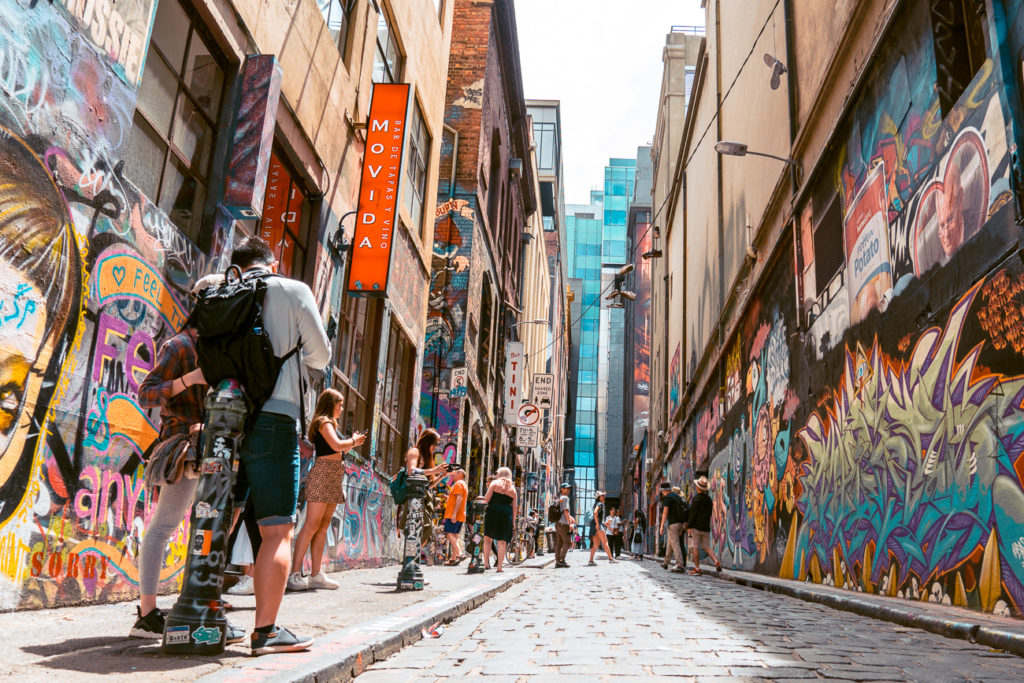
Final thoughts on getting around on Melbourne transport
Despite being a large city, Melbourne is easy to get around. With multiple modes of transport available, including an extensive public transport system, with a bit of planning you can get from A to B easily.
Found this article useful? Consider buying me a coffee as a way to say thanks!
Got any more questions about how to get around Melbourne? Drop them in the comments section below.
Related posts
Before you go… you might like these handy Melbourne travel planning blogs:
- 15 Melbourne Travel Tips Every Visitor Should Know
- The Best Time to Visit Melbourne + What To Do by Month
- The Ultimate Melbourne Bucket List: 101 Best Things to Do, See and Eat
- 30 Awesome Things To Do in Melbourne
Best Melbourne resources
- Check out my Melbourne travel guide for everything you need to know about planning a trip to Melbourne
- Look for flights to Melbourne on Skyscanner .
- Book accommodation on Booking.com or Expedia for your Melbourne trip. The Ovolo Laneways Hotel is a good choice in the CBD.
- You won’t really need a car in Melbourne, but if you do want to get out of the city, then rent a car through DiscoverCars .
- Pick up a copy of the Lonely Planet Pocket Melbourne to help plan your trip.
PIN IT FOR LATER
Visiting Melbourne? Save this guide to Melbourne transport options to Pinterest so you can get around the city on your trip.
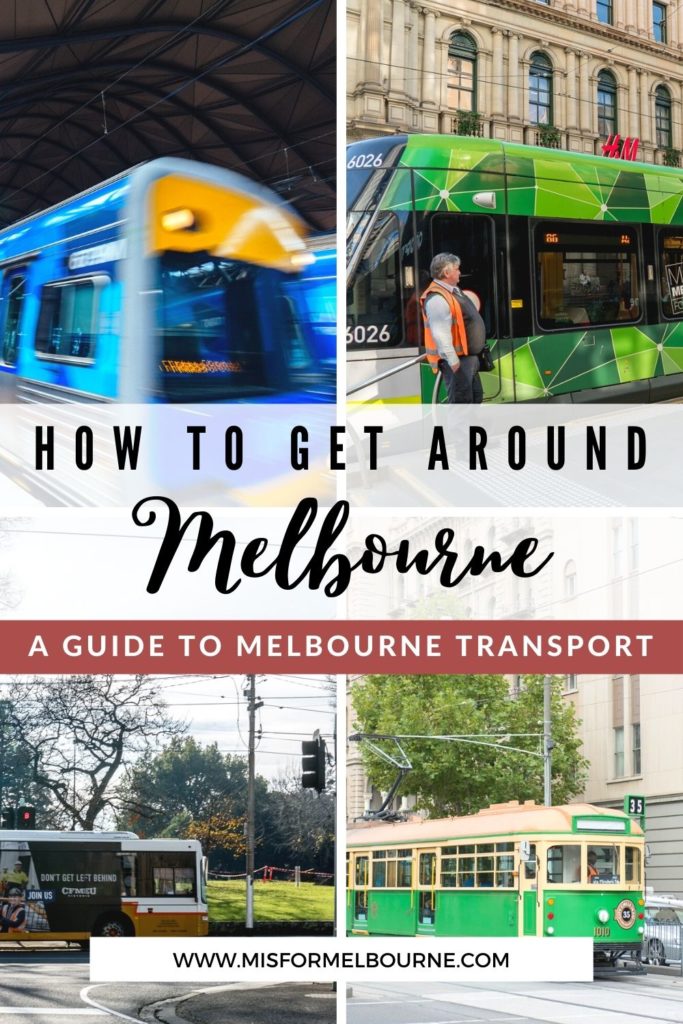
About THE AUTHOR
I’m Rebecca, a Melbourne local excited to show you the best of Melbourne. I've visited more than 40 countries and have a Master of International Sustainable Tourism Management. After living abroad for 8 years, I’m back home in Melbourne, rediscovering this city that I love and have missed. My aim is to help you find the best things to do in Melbourne.
Leave a Comment Cancel reply

- Privacy Overview
- Strictly Necessary Cookies
This website uses cookies so that we can provide you with the best user experience possible. Cookie information is stored in your browser and performs functions such as recognising you when you return to our website and helping our team to understand which sections of the website you find most interesting and useful.
Strictly Necessary Cookie should be enabled at all times so that we can save your preferences for cookie settings.
If you disable this cookie, we will not be able to save your preferences. This means that every time you visit this website you will need to enable or disable cookies again.

- Skip to content
- Skip to navigation

A Guide to Public Transport in Melbourne
To help you learn the ropes, we've put together this handy guide with everything you need to know about using public transport in Melbourne
There are so many great reasons to choose Melbourne as your international study destination, one of which is the amazing public transport network in the city. With a well-planned and efficient system, public transport in Melbourne is both easy and affordable.
Figuring out how to get around in a new city can be challenging. To help you learn the ropes, we've put together this handy guide with everything you need to know about using public transport in Melbourne.
Trams, buses and trains
Trams, buses and trains are popular transit choices in Melbourne. With frequent services running across the city and surrounding suburbs, you’ll have no problem getting wherever you need to go.
Melbourne's trams aren't just an icon of this great city - they also play a vital role in the transport network. With 24 routes, Melbourne’s tram network is one of the biggest in the world.
Plus, thanks to the Free Tram Zone , you can travel on trams within the city centre for free. If you're doing some sightseeing, the City Circle Tram offers a free hop-on-hop-off service that will take you on a guided tour around Melbourne’s biggest sights and attractions.
Trams run every seven to 10 minutes during peak times and every 20-30 minutes during off-peak hours.
Melbourne also features a great bus network you can use to get around. You’ll find that buses are especially handy for getting to and around Melbourne's outer suburbs, where there are fewer trams.
On busy routes and during peak hours, you can expect most buses to arrive every 10-15 minutes. On quieter routes or during off-peak times, buses will usually arrive every 20-30 minutes.
You’ll also have the option of using Melbourne’s great train network, which is run by Metro Trains . Trains are a great choice for longer trips between Melbourne and surrounding suburbs.
Trains run from 5am to midnight every day, with services offered every four to five minutes during peak hours and every 20 minutes during off-peak times.
Those hoping to travel from Melbourne to regional areas will benefit from the VLine , which connects passengers to areas such as Ballarat, Bendigo, Geelong, Gippsland and Seymour. You can use your myki card on some lines but will need to purchase a paper ticket for certain destinations, such as Albury, Shepparton and Warrnambool.
Save money on public transport with an International Student Travel Pass
Eligible students can get a 50% discount and can save up to $1034*. State wide passes can be purchased so you can travel across Victoria for the same price as within Melbourne. The Pass is available in three versatile options - 90 days, 180 days or 365 days to suit your preference.
To be eligible, you must be an undergraduate international student studying full-time at an institution that's part of the program.
*Based on a 365 day pass.
Night Network
While regular train, bus and tram services end at midnight, you can get out and about all night long on Fridays and Saturdays thanks to the Night Network .
The Night Network runs all-night services on select train, tram and bus lines throughout Melbourne. The Night Network even operates a night coach, which ferries people between Melbourne and other metropolitan hubs like Ballarat, Bendigo and Geelong.
Ticketing and transport passes
The fares you'll pay on Melbourne's public transport depend on how far you’re travelling and your ticket type. The public transport network is separated into three zones :
- The Free Tram Zone
If you're travelling to or within the outer suburbs , you may only need to pay the Zone 2 fare, while travelling in the city or between zones means you'll pay for travel in both Zone 1 and 2.
You can learn more about Zones via Public Transport Victoria (PTV) and discover which zone your nearest stop or station is in here . Simply navigate the page depending on your preferred method of transport, enter your stop and route details, and the system will generate the information you need, including your Zone number.
To use public transport in Melbourne, you'll need a myki card. This can be used on all trains, trams and buses, as well as on some regional services.
You can purchase a myki card from train stations, ticket machines and some convenience stores. Once you have your myki card, you'll be able to use this by tapping it to the readers on buses, trains and trams.
It’s important to remember that travelling without a valid ticket or failing to touch on when you board can lead to serious fines , so make sure you follow the rules when using public transport in Melbourne.
Carshares, taxis and rideshares
For those times when you need a private vehicle, Melbourne also has plenty of car share, rideshare and taxi options.
Car sharing
Car sharing through companies like Flexicar , GoGet and Uber Carshare all the convenience of having your own car without the cost. It’s also better for the environment, as it reduces the number of private vehicles on the road.
Once you've registered online with a car-sharing service, you can book a car online and collect it from a location near you.
Rideshare companies like Uber , Ola and Didi also operate in Melbourne, along with specialised rideshare operators, like Shebah , a women-only service.
To book a rideshare, download your chosen rideshare app on your phone. You'll then be able to book yourself a ride whenever you need one.
E-Scooters and E-Bikes
There are also Lime and Neuron electric scooters and bikes available to rent across Melbourne. To ride one, you will need the corresponding app to unlock the scooter or bike. Your fare will be determined based on time; the app requires $1 to start the rideable device and then $0.45 per minute after that. You can also rent a scooter or bike for a 90-minute period, which will cost a flat rate of $15.
These devices can only be ridden in certain areas of Melbourne and riders must follow all safety requirements, such as wearing a helmet. It’s also important to note that personal e-scooters are prohibited for public use in Melbourne.
Learn more about the laws and regulations for e-scooters at VicRoads .
You can also learn about e-bike hire on the City of Melbourne website .
You can also easily get a taxi anywhere in Melbourne. In busy areas like the CBD, you can hail a taxi on the street or head to one of the many cab ranks. Alternatively, you can book a taxi online or by phone with any of the city's cab companies, such as:
- 13 Cabs - 13 22 27
- Crown Cabs – 1300 12 13 14
- Silver Top Taxis – 13 10 08
To find out more about transport in Melbourne, check out our guide to getting around . You can also learn more about public transport in Victoria via the PTV website .
Was this page helpful?

Modelling the Impacts of On-Demand Public Transport
Thesis type.
- Thesis (PhD)
Thesis note
Copyright statement, supervisors, usage metrics.


IMAGES
COMMENTS
Children under four years travel for free and do not need a myki card. For more information on zones, ticketing and timetables, visit the PTV website. Night network. Melbourne's Night Network offers all-night public transport on weekends, with all-night metropolitan trains and trams, late-night buses, and a 2am coach service to key regional ...
Peak traffic on public transportation and the roads is Monday to Friday from 7 a.m. to 9 a.m. and 4 p.m. to 7 p.m. During this time, the roads leading into and out of the city will be jam-packed with people traveling to and from work. If you're traveling by train, be attentive towards the express services.
See your travel history, set Auto Top Up, protect your myki balance and receive a new card when yours expires. PTV is your go-to for all things public transport in Victoria, Australia. Plan a journey or access info on ticketing, travel, disruptions, timetables & more.
PTV Hubs. by calling 1800 800 007. stations and stops - look for station barrier staff, Protective Service Officers or Authorised Officers. on trains, trams and buses - speak to the driver if they aren't driving, or look for an Authorised Officer. We provide a range of public transport information in languages other than English.
Facebook. Victoria State Government Department of Transport and PlanningSkip to main content. myki is your ticket to travel on trains, tram and buses in Melbourne & parts of regional Victoria. Top up myki online or buy a myki now.
Buy a Myki smartcard for flexible travel between trains, trams and buses. You'll be able to use public transport in and around the city for just a few hours or all day. In the Free Tram Zone, you don't need to use your myki card. The Free Tram zone includes the city centre and extends from Queen Victoria Market to Docklands, Spring Street ...
There are more routes for buses than trams, they travel further out into the suburbs, and they travel across the city more directly than other public transport options. Be sure to tap your Myki ...
Melbourne has one of the best public transport systems in Australia, offering a number of services including trains, buses and trams (also known as trolleys or streetcars). Metro operates Melbourne's metropolitan train network, while V/Line operates Victoria's regional public transport. Different companies operate our trams and buses.
Public transport. Info. Melbourne's famed trams and extensive train and bus network make it easy to explore every corner of the city. Melbourne's public transport network extends from the city centre in all directions, with trains, trams and buses offering comprehensive public transport services. There's also the free City Circle Tram to help ...
Getting around Melbourne on public transport. Trains are a great way to visit attractions across the city and reach the surrounding suburb. Major stations in the city include Central, Flinders and Southern Cross Station. Use the Journey planner tool to find your route. Trains to regional destinations including Geelong, Ballarat, Bendigo and ...
Outside of the free tram zone, Melbourne's transport fares can be quite pricey. Within a 2-hour time frame, one ride in Zone 1 and 2 costs $4.50 — but the maximum that you can be charged in a day is $9.00 (two rides). On weekends and public holidays, one trip costs A$3.25 and the daily fare is capped at A$6.50.
The Melbourne City Express operates from 4:30am to midnight everyday, and the journey takes approximately half an hour. Essentially, you won't be waiting more than 15 minutes for a bus. Travel tip: Save money by buying return tickets. Currently, a one-way ticket costs AUD19.75 for adults, and AUD32 if you get a round trip ticket (prices ...
Use the bus - or night bus - to reach your destination. Melbourne has an extensive bus network, with over 300 routes covering places trains and trams don't go. Most routes run from 6am to 9pm on weekdays, 8am to 9pm on Saturdays, and 9am to 9pm on Sundays.
The trams travel all around Melbourne's centre and suburbs, and journeys are usually quite fast and comfortable - although there tends to be a risk of overcrowding during peak times. ... Using Melbourne's public transportation typically costs between $4.20-$7.30 for an adult one-way ticket, depending on the zone one is travelling in and the ...
You'll need either a myki or paper ticket to travel on public transport in Melbourne and regional Victoria. You need a myki if you're travelling on: Melbourne's trains, trams and buses. V/Line trains between metropolitan Melbourne and Eaglehawk/Epsom, Seymour, Traralgon, Waurn Ponds and Wendouree. Buses within Geelong, Ballarat, Bendigo ...
Melbourne's public transport system is one of the world's fastest and most efficient thanks to its well-connected network of trains, trams, and buses. You can reach the CBD and the surrounding suburbs in minutes. To help you navigate, you can use Public Transport Victoria's very handy journey planner.
The myki is an electronic stored-value reloadable smart card that is used in all public transportation services in Melbourne — bus, tram, train. With this card, you can easily get around the city and even the surrounding suburbs. ... From Manila, fly to Melbourne with Philippine Airlines. Travel time is only around 8 hours. Regular fares can ...
Buses run along more than 300 routes in central Melbourne and into the suburbs. There are two bus zones, and bus fares are based on the distance traveled. Standard fares cost AU$2.70 or AU$3.90 ...
Melbourne is still without a train to and from the airport, so to get from Melbourne airport to the city, your options are Uber/rideshare or taxi, renting your own car, or taking the SkyBus. An Uber or taxi will cost you around $45-$75 (up to $100 sometimes during peak periods). There are two taxi ranks, one outside of Terminal 1 and the other ...
Crown Cabs - 1300 12 13 14. Silver Top Taxis - 13 10 08. To find out more about transport in Melbourne, check out our guide to getting around. You can also learn more about public transport in Victoria via the PTV website. To help you learn the ropes, we've put together this handy guide with everything you need to know about using public ...
myki - your ticket to travel Regional tickets Ticket help: refunds, replacements, myki expiry & more Fares Group travel ... Journey planner provides detailed public transport information and maps right across Victoria.
This research evaluated the merits of an emerging mode of the technology-driven on-demand public transport system. The research included the development of state-of-the-art traffic simulation tools, supplemented by travel behavioural surveys, machine learning and artificial intelligence methodologies, to test and compare performance against existing public transport systems. The modelling ...
If you no longer have access to this mobile number, please call us on 1800 800 007. Enter the 6-digit verification code from your authenticator app. View timetables for all public transport modes across Victoria.
The shift in travel behaviour due to increased remote work has significantly impacted the use of both private and public transport in cities like Melbourne. Data indicate a notable decrease in public transport usage in 2023 ( Figure 1 ) compared to 2019 [ 2 ].
Melbourne commuters are facing months of road closures and public transport delays as the Allan government scrambles to finish Big Build projects. See which areas will be affected. The upcoming ...
We define the metropolitan area as Melbourne and its suburbs, and the rest of Victoria as regional. The fare you pay is determined by: where you travel, including the zones you travel through if you're using myki. your ticket type, for example a 2 hour or daily ticket. whether you're eligible for a concession fare or free travel.
Work on major transport infrastructure projects may impact the way you travel around Melbourne and across the state. Public transport and road disruptions As part of Victoria's Big Build, work on the West Gate Tunnel Project is progressing to widen the West Gate Freeway from 8 to 12 lanes and build the new bike veloway above Footscray Road.